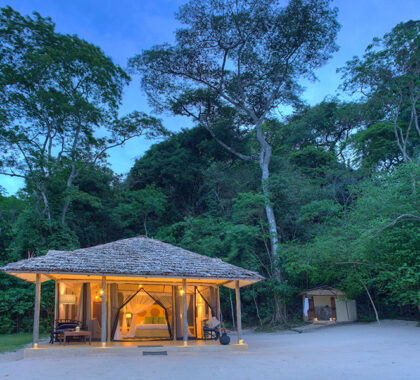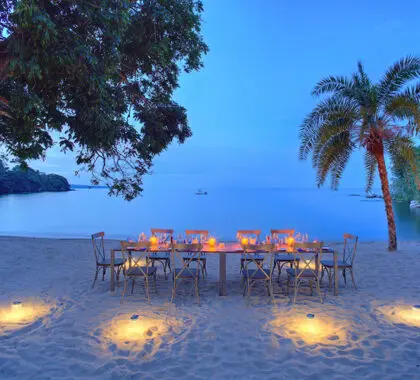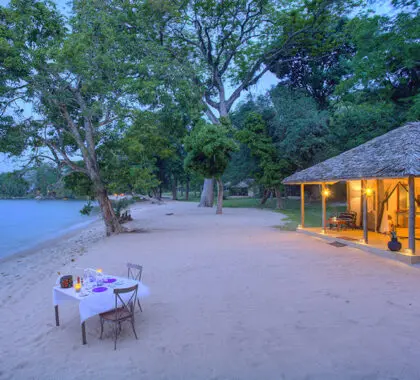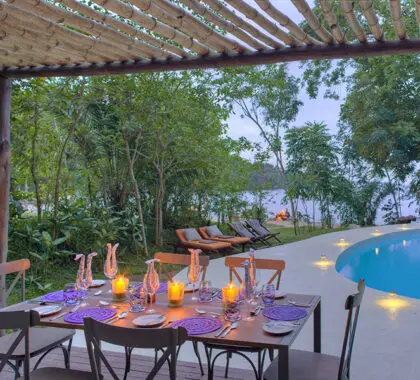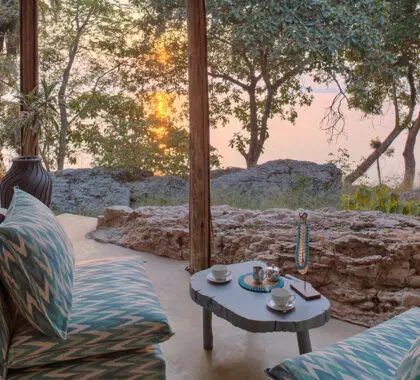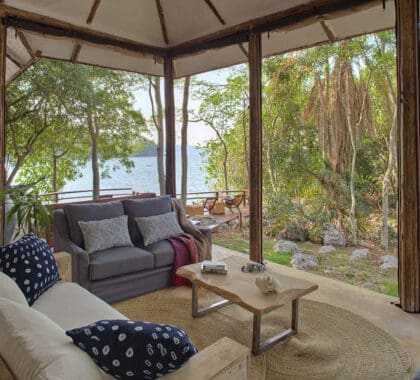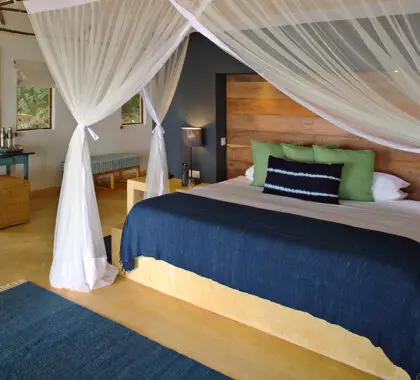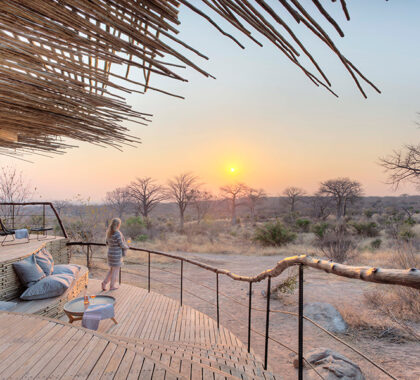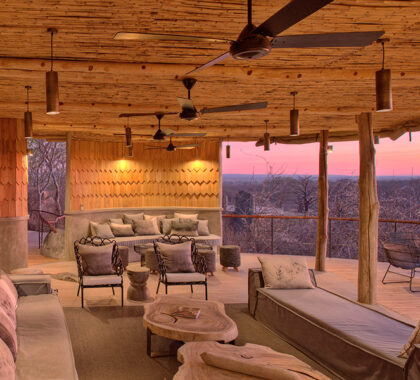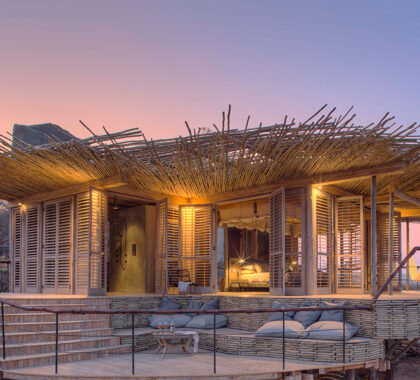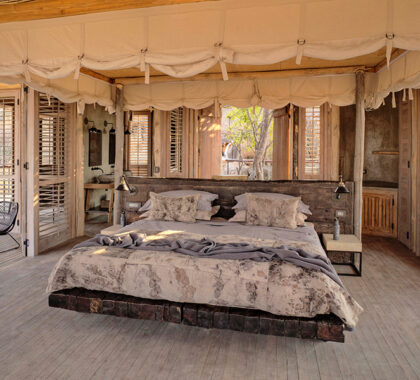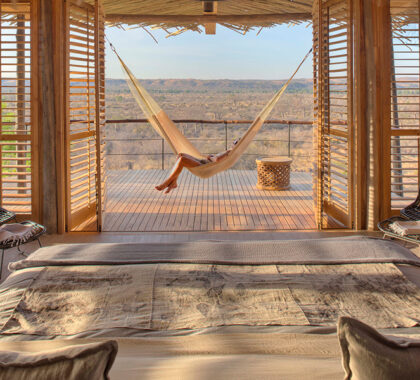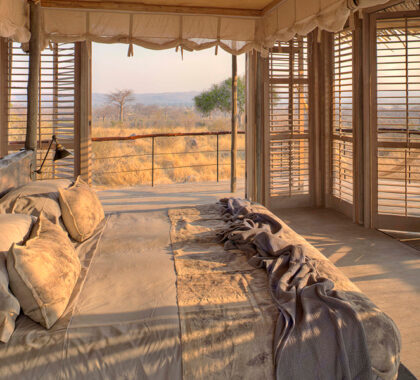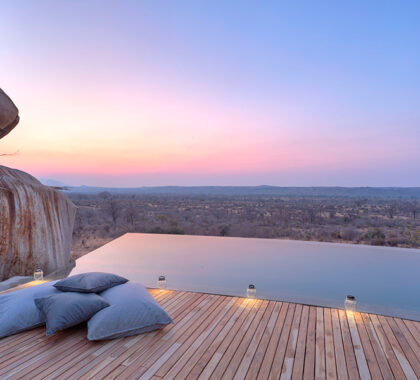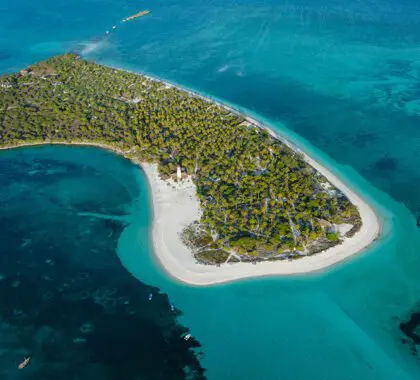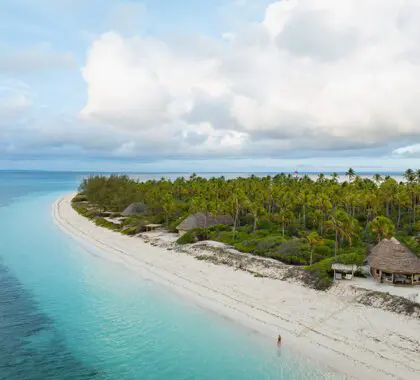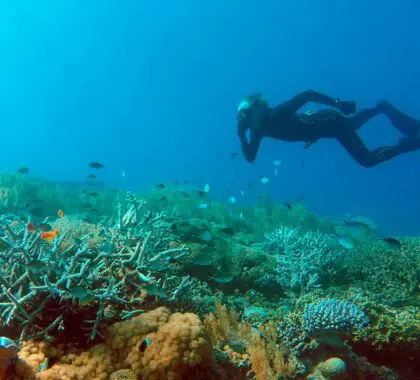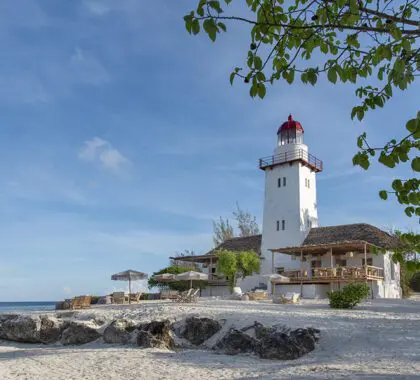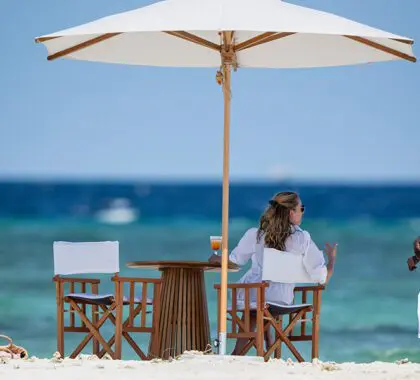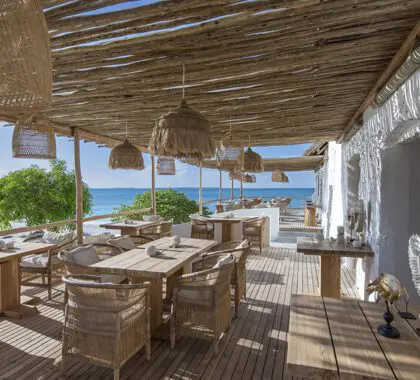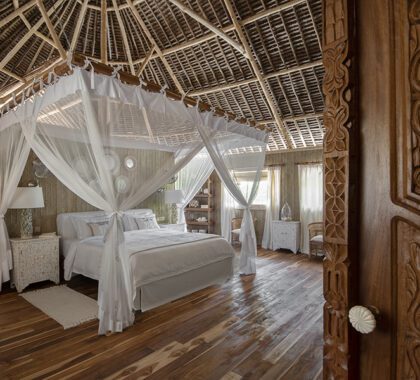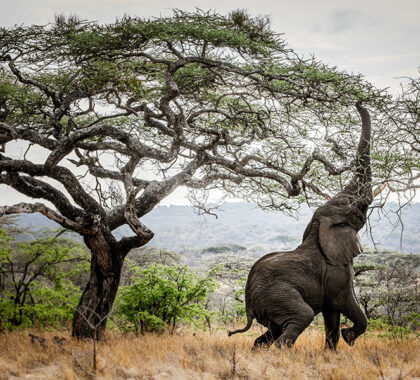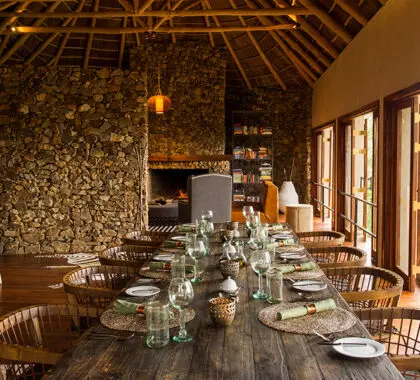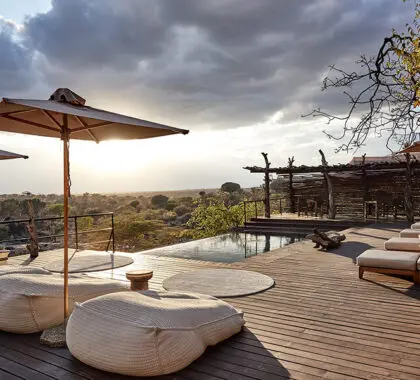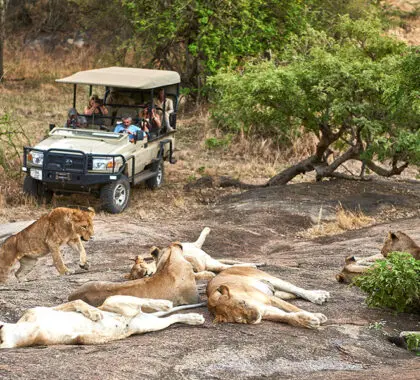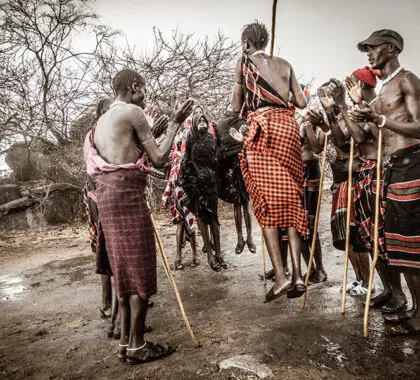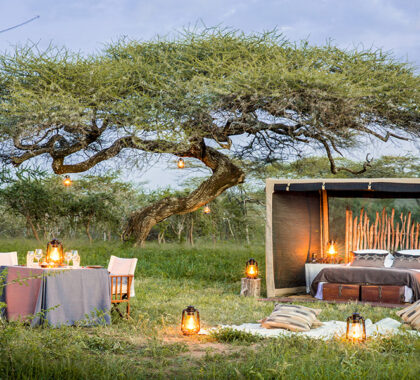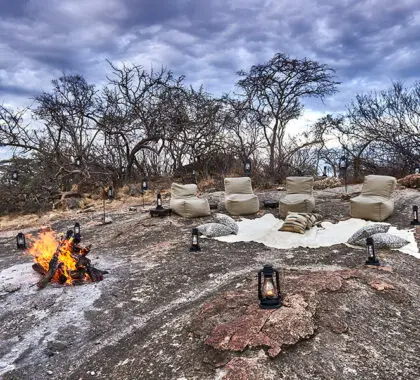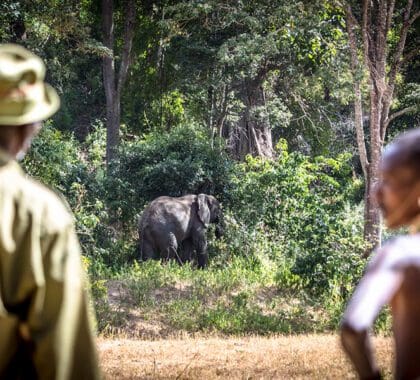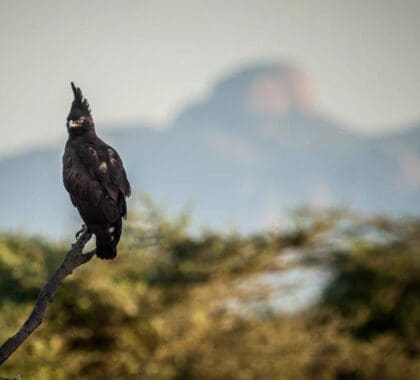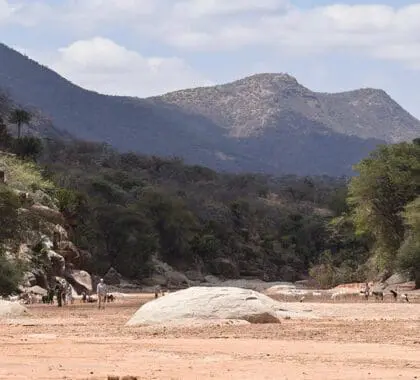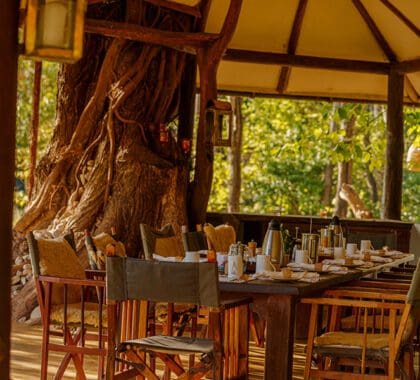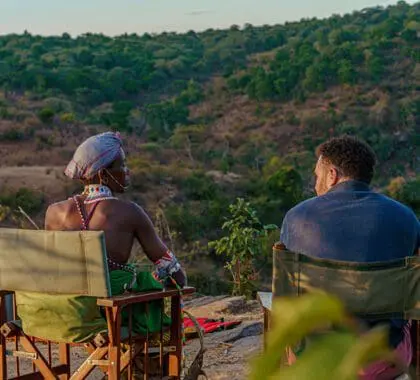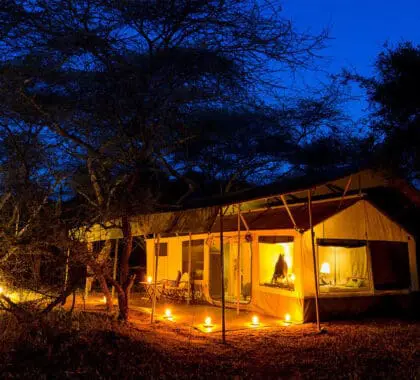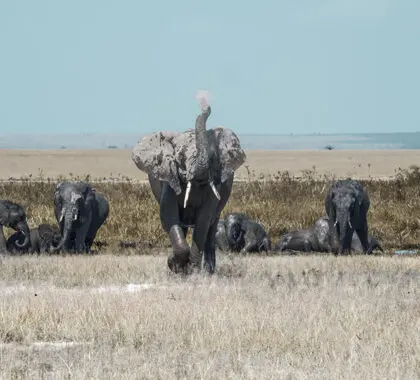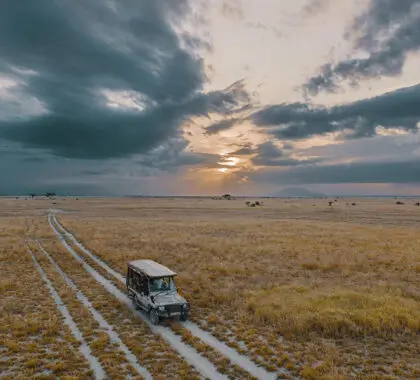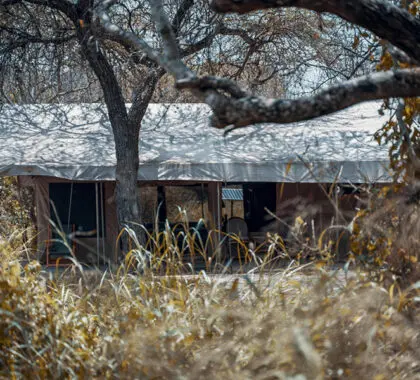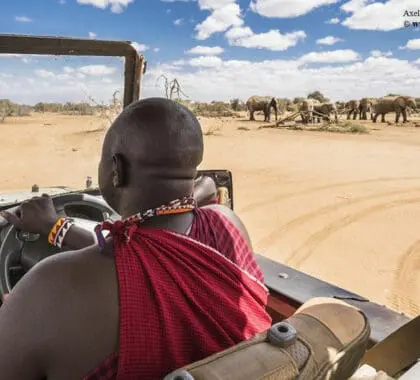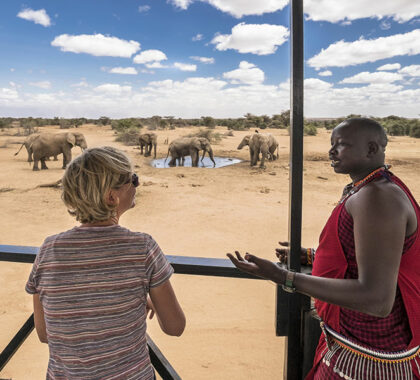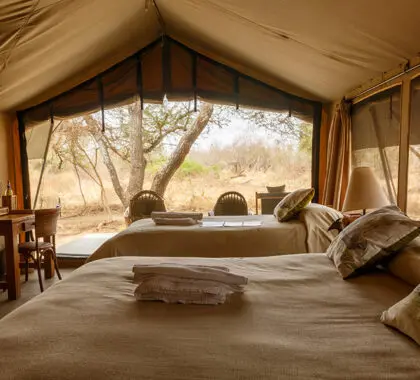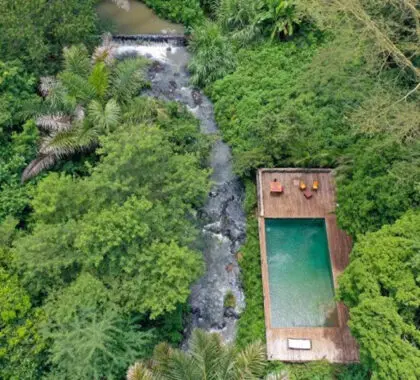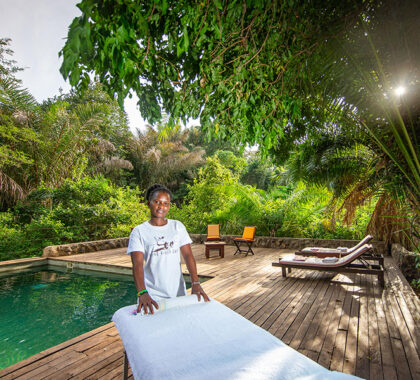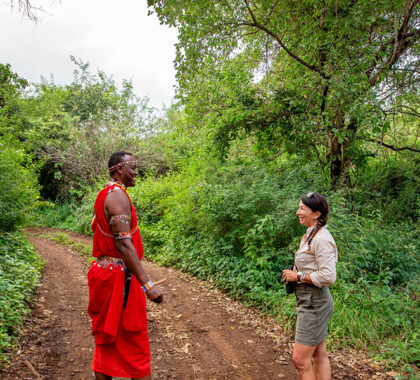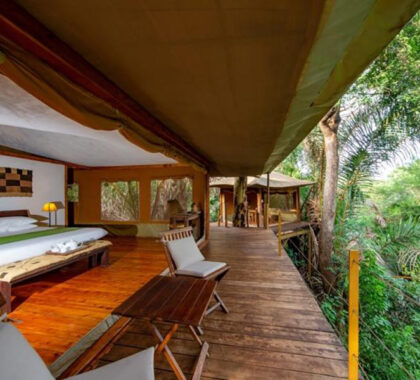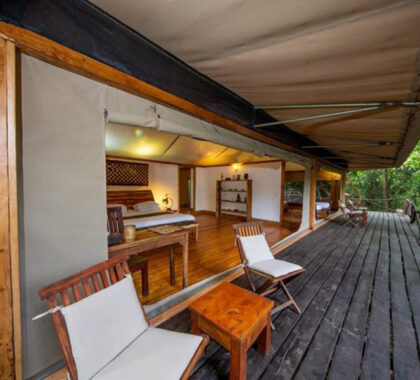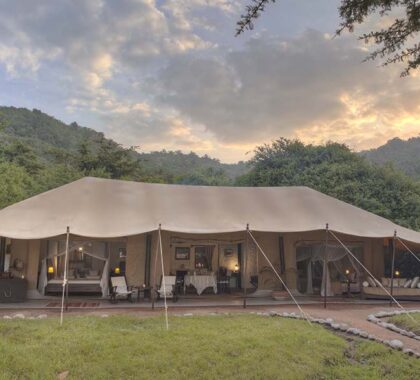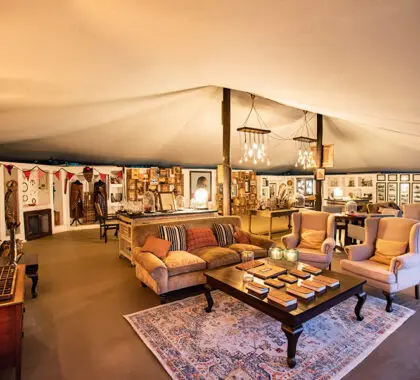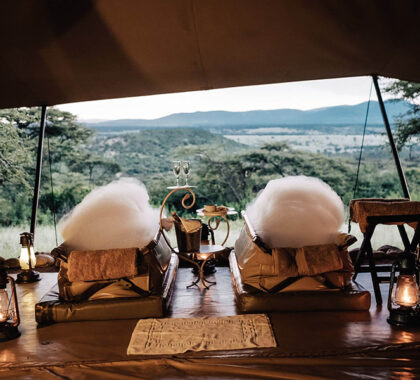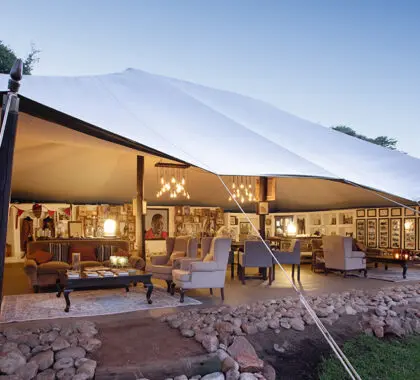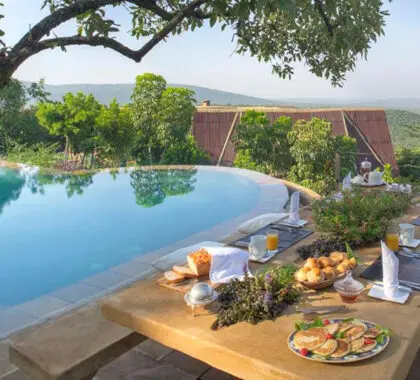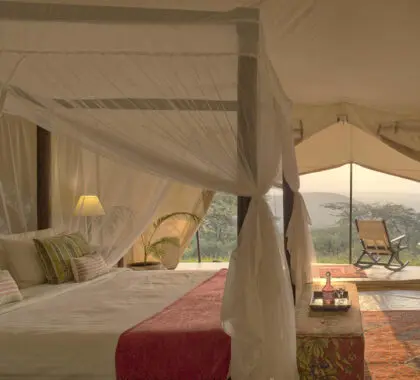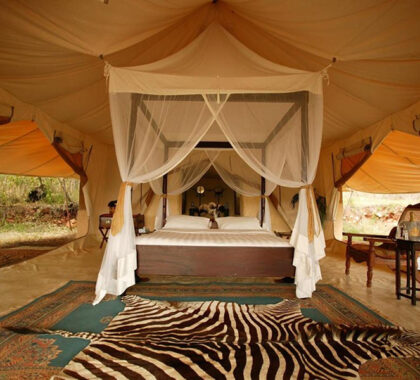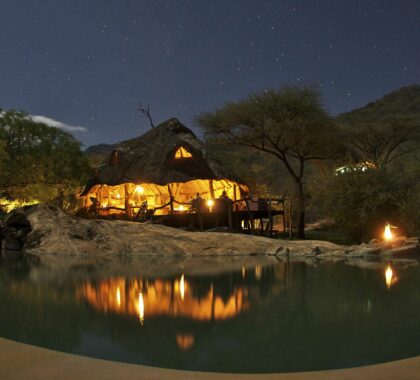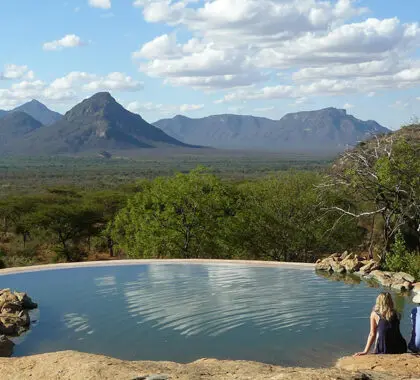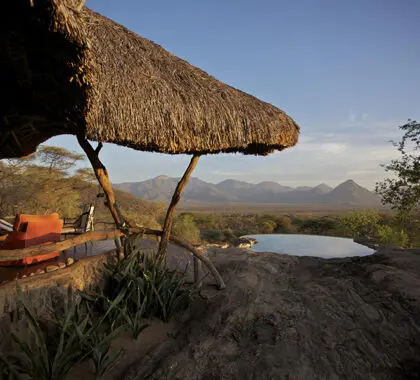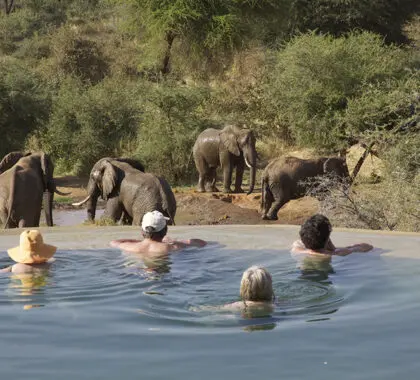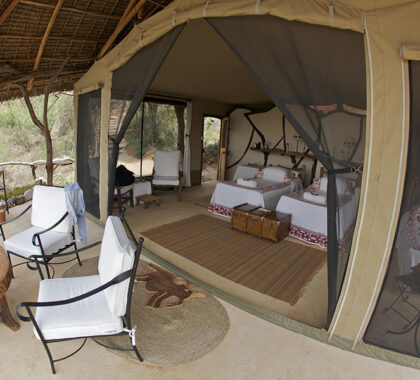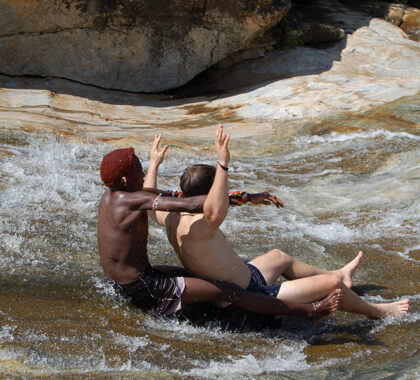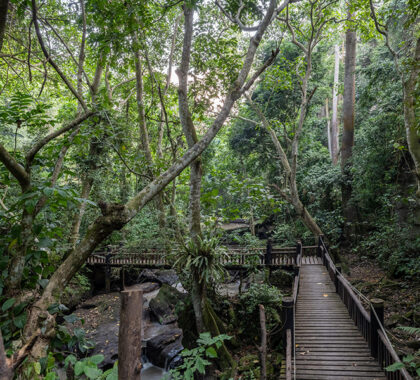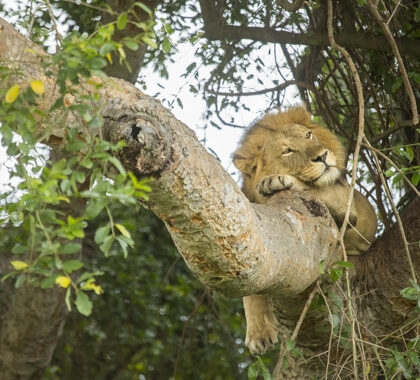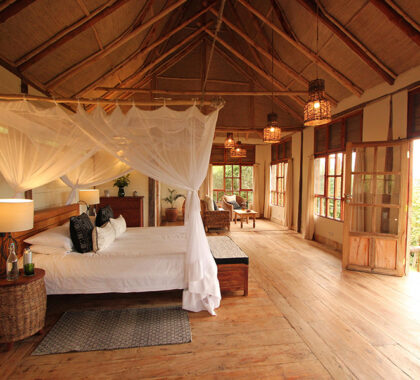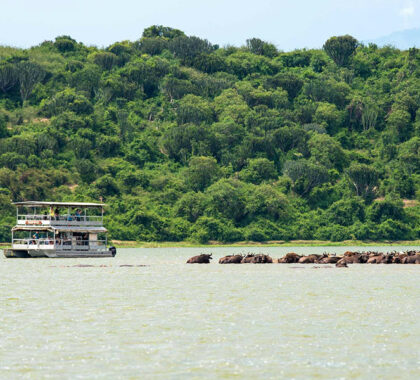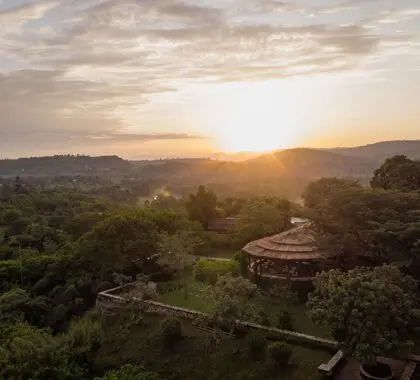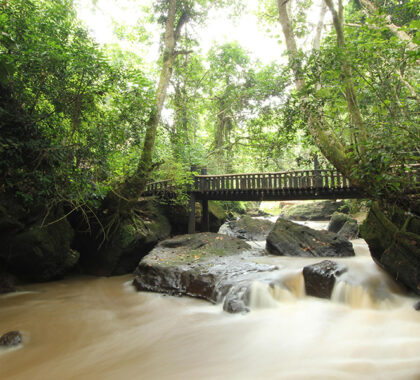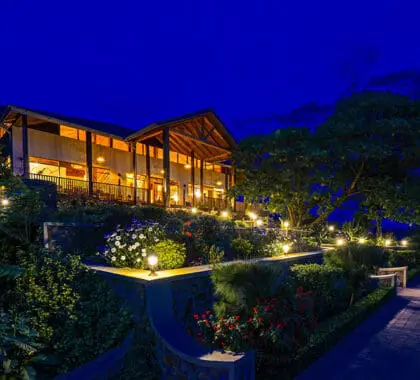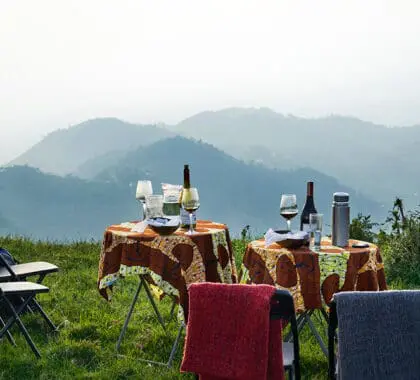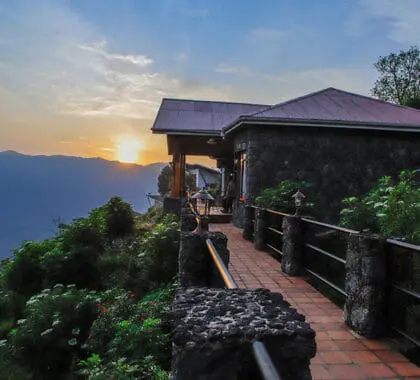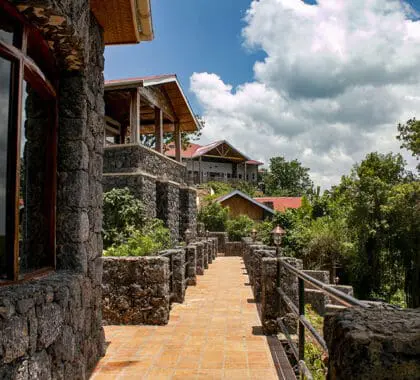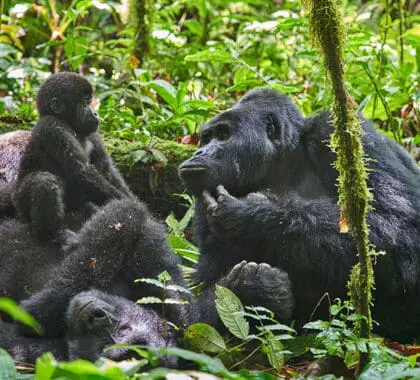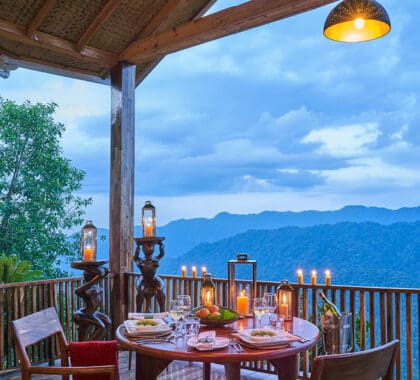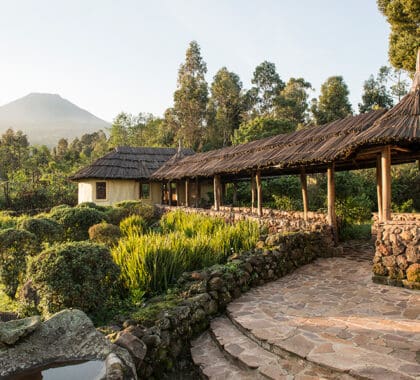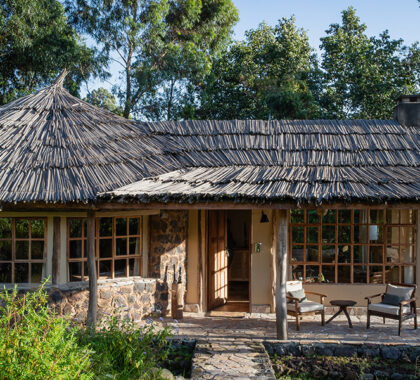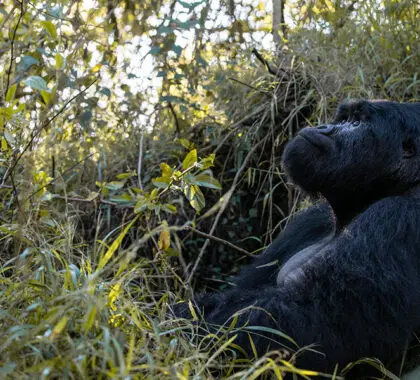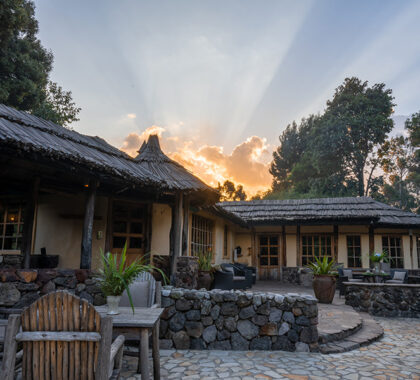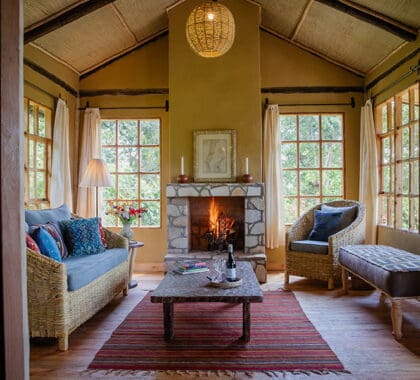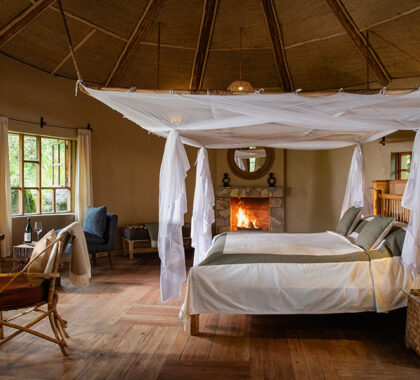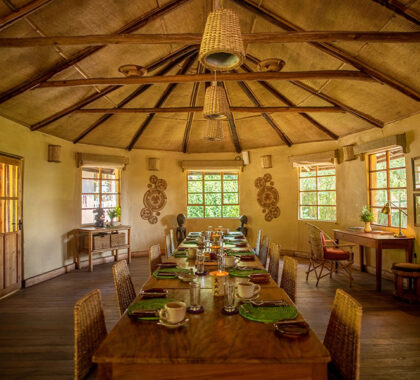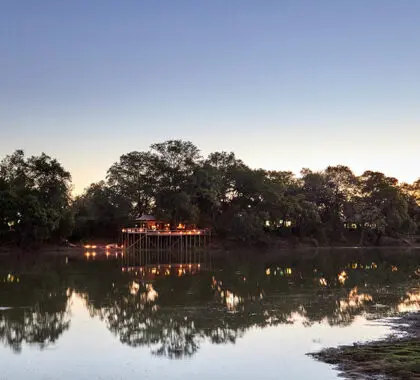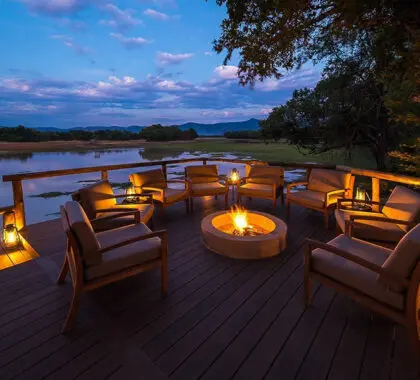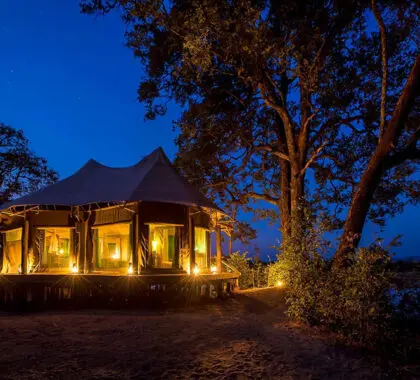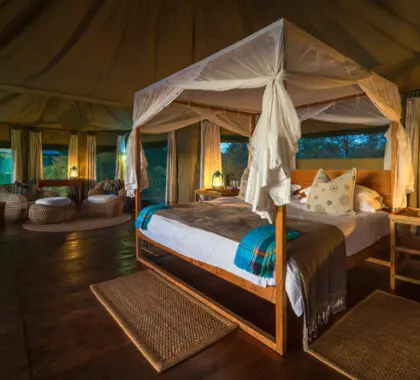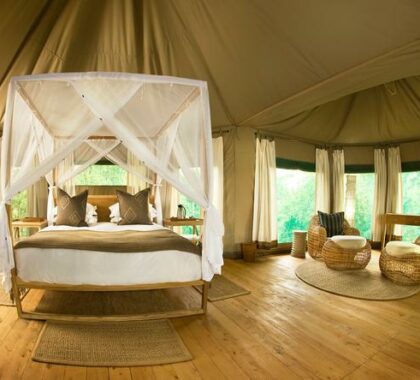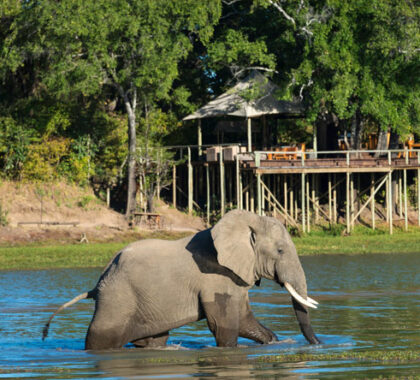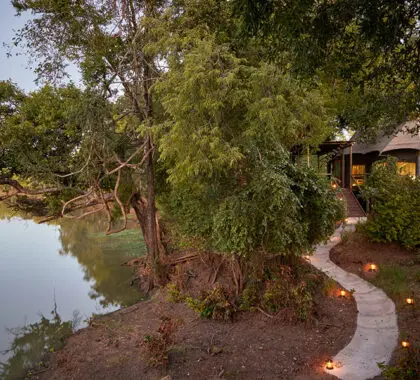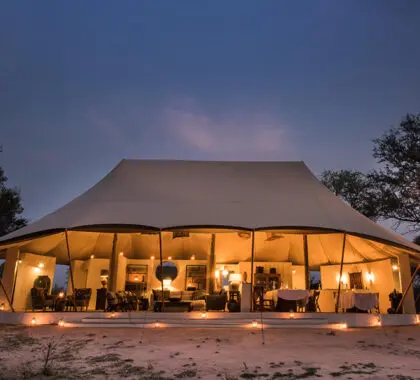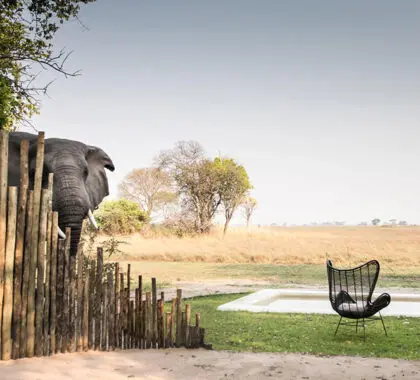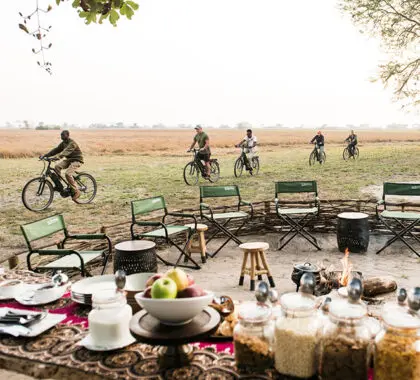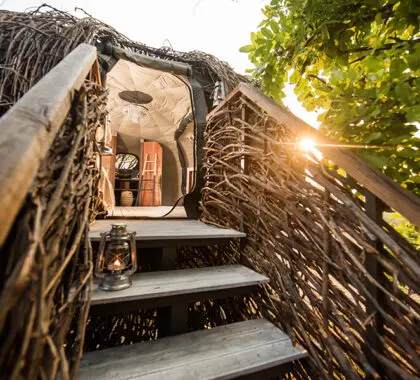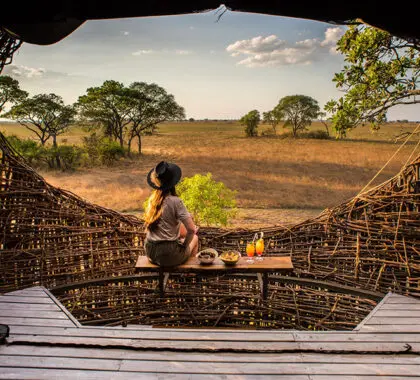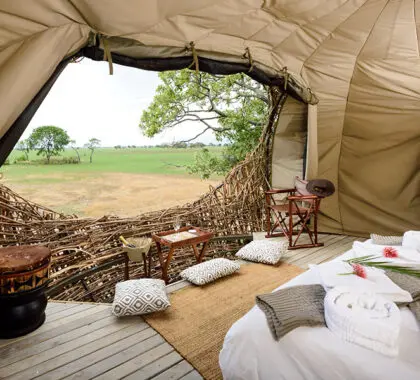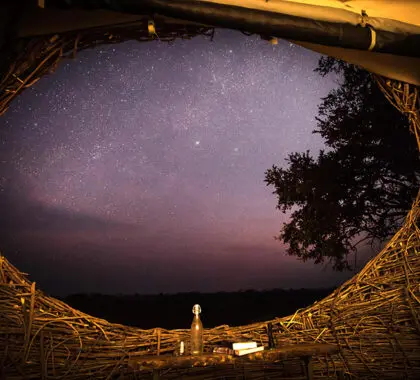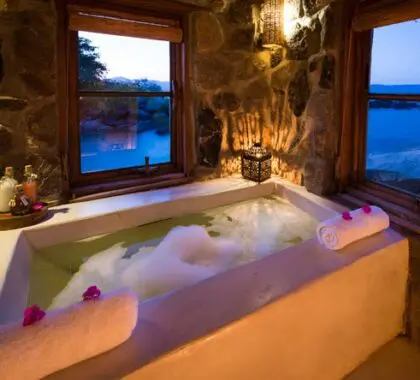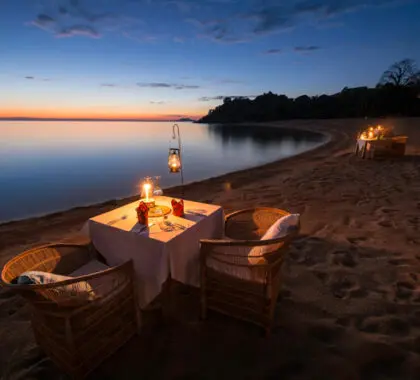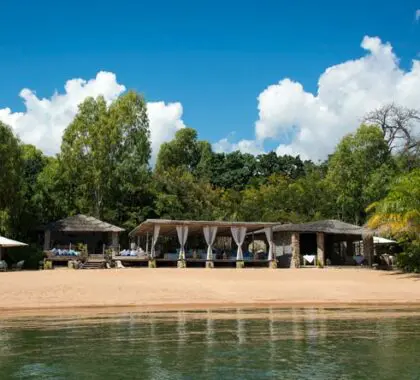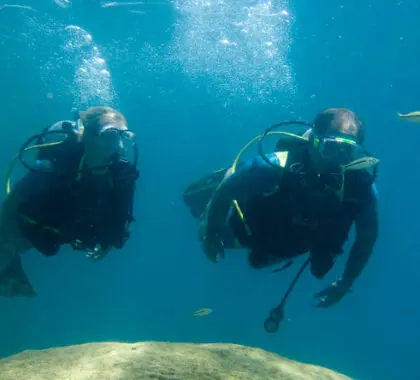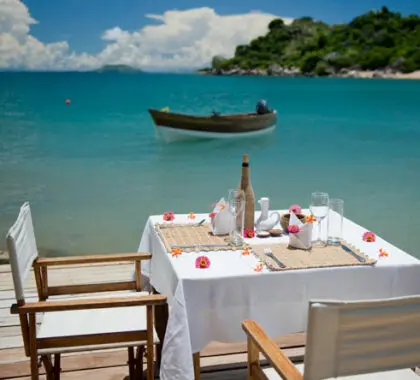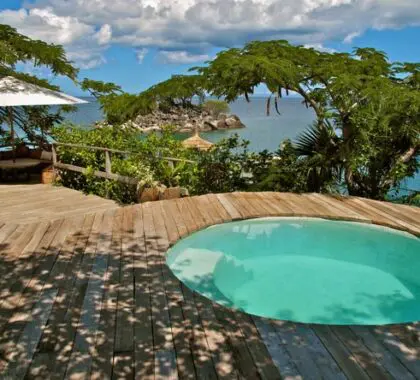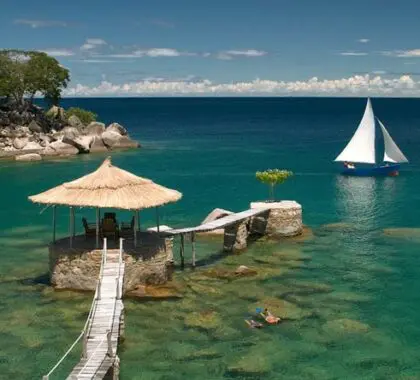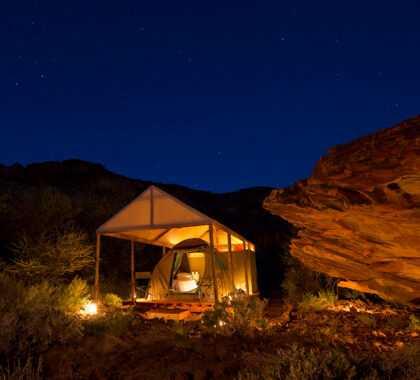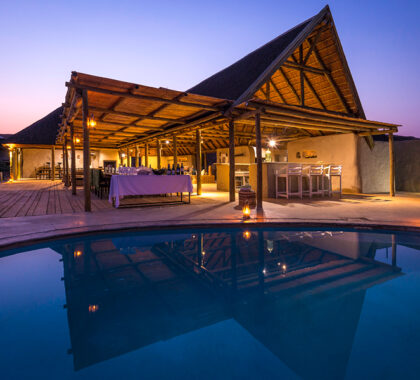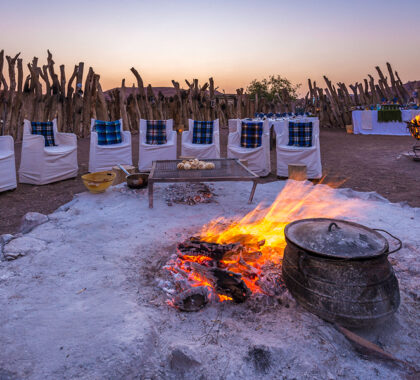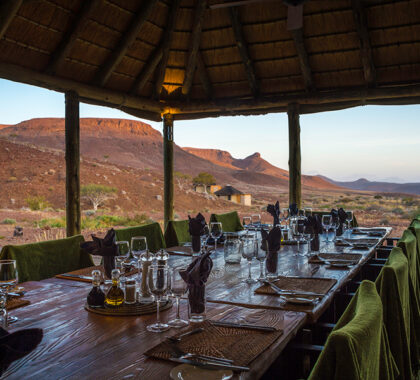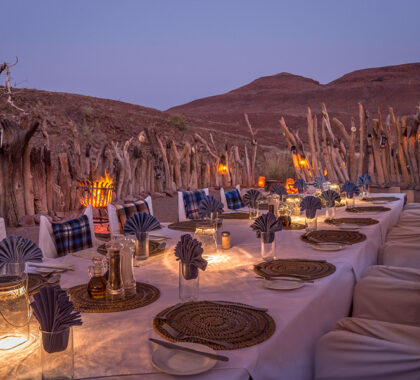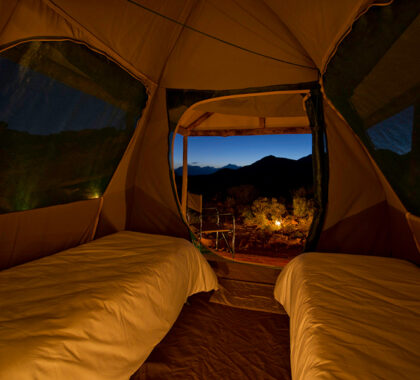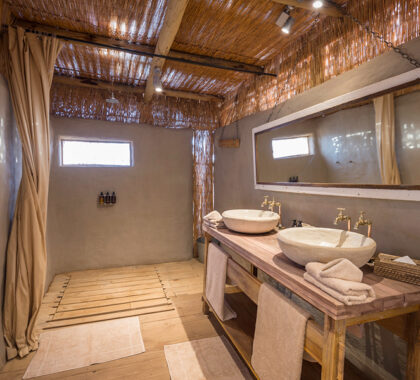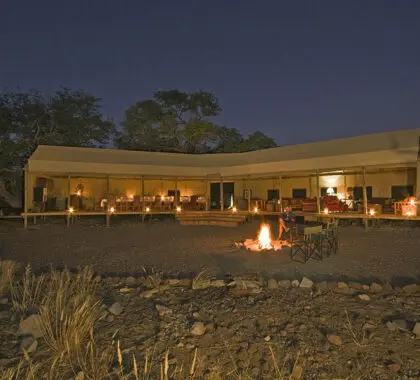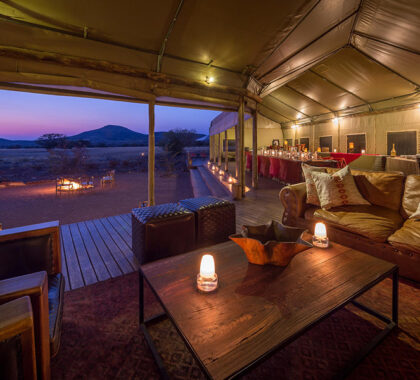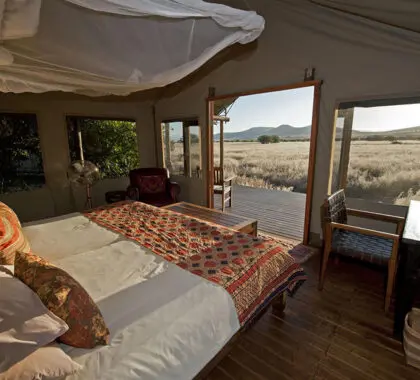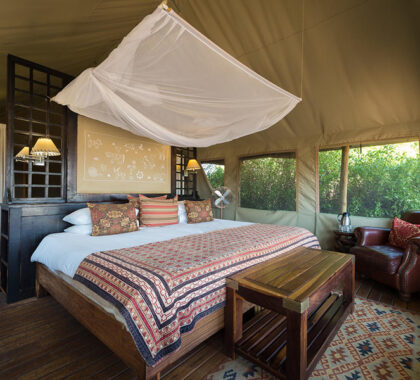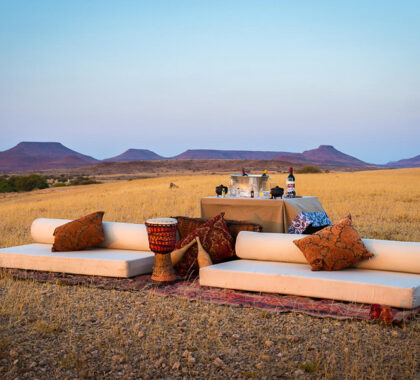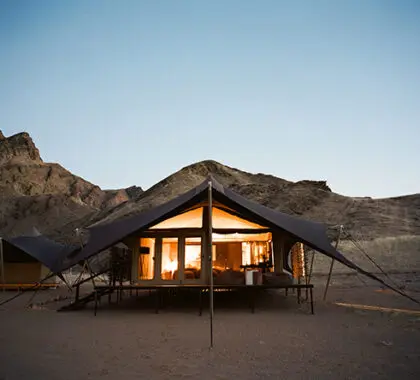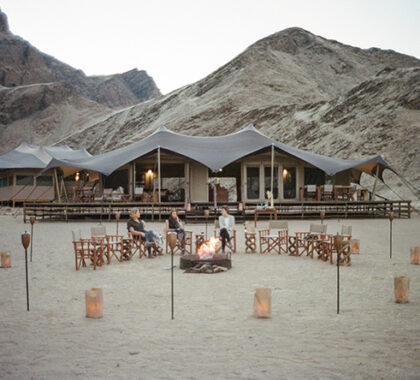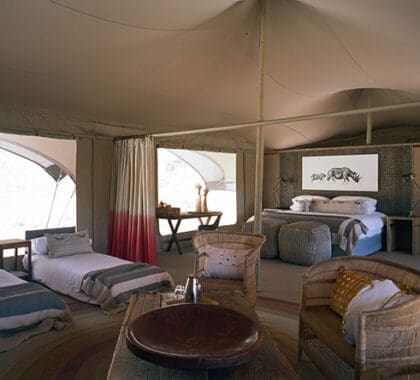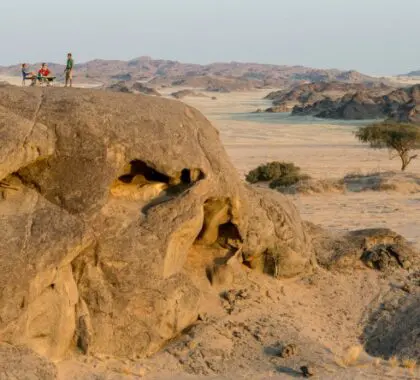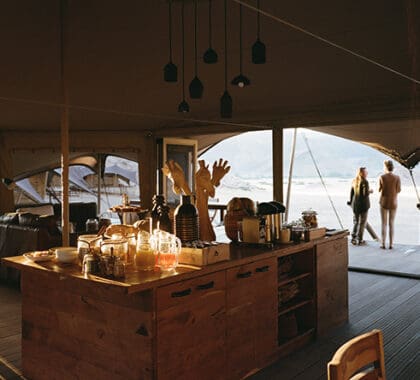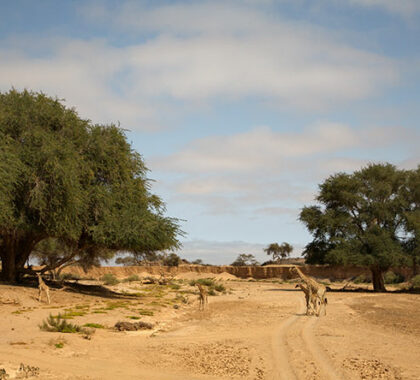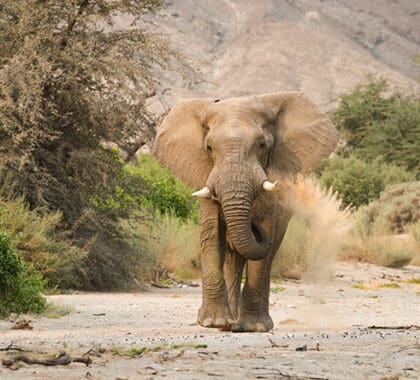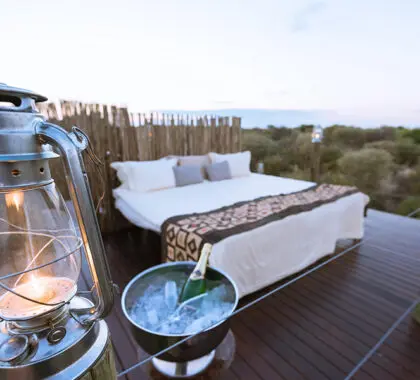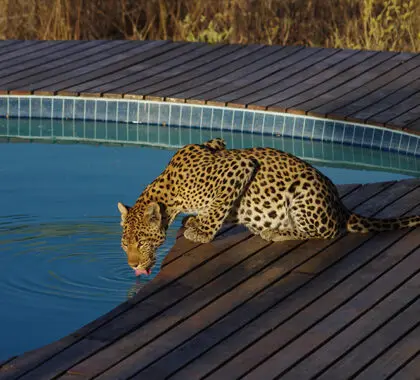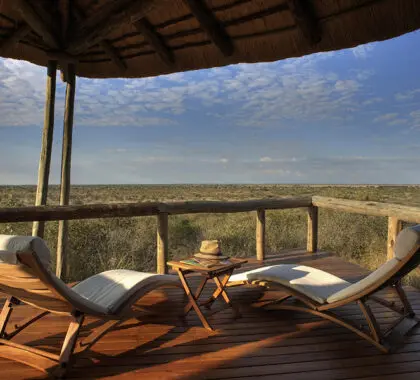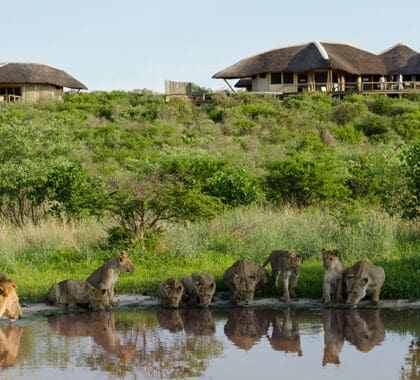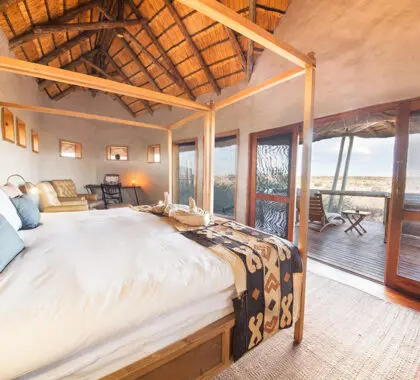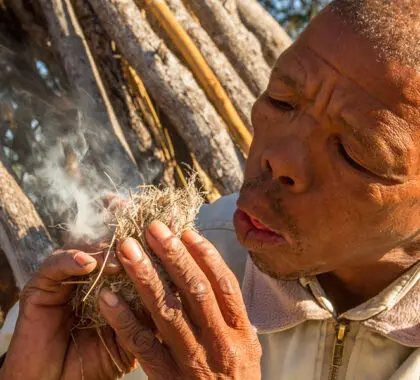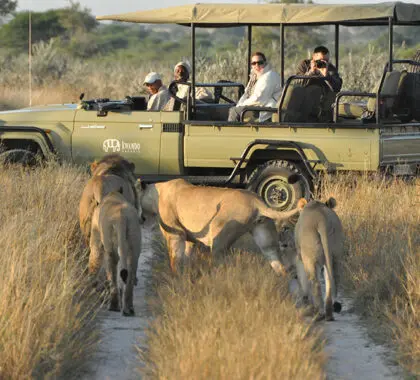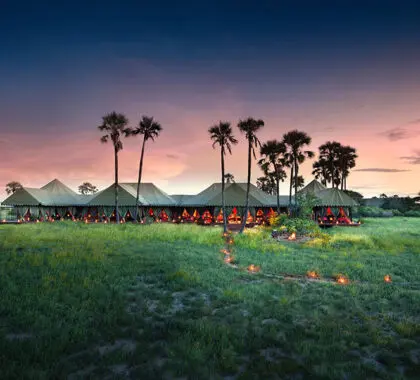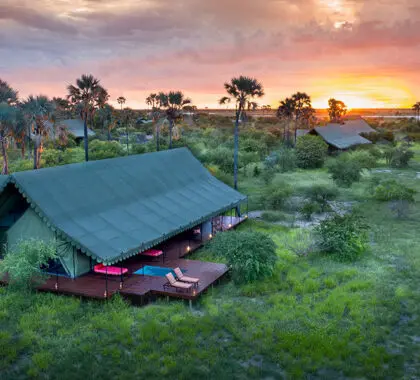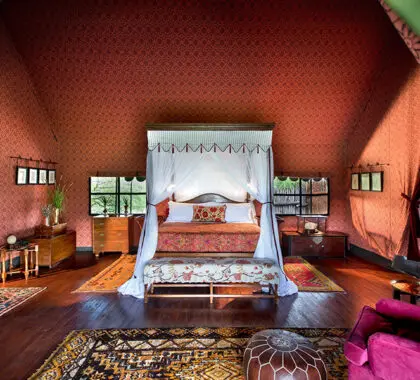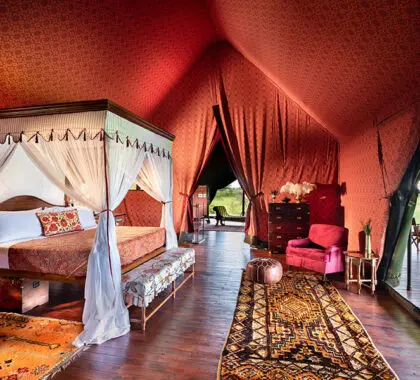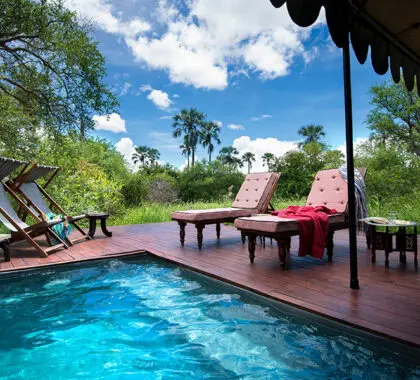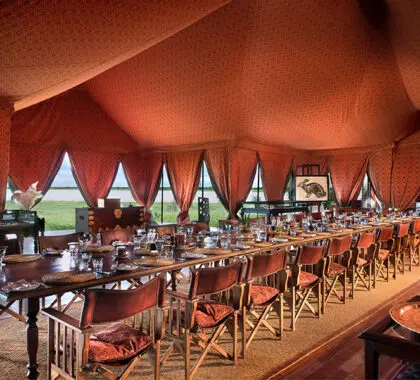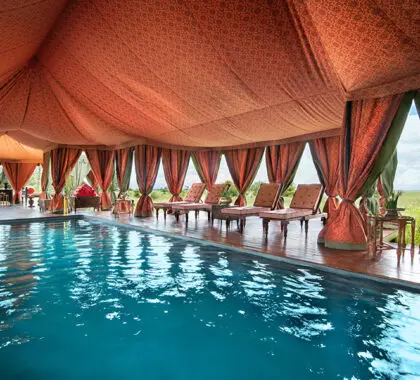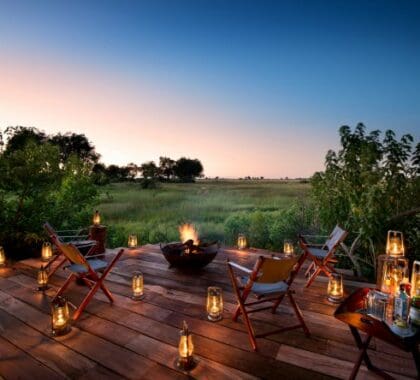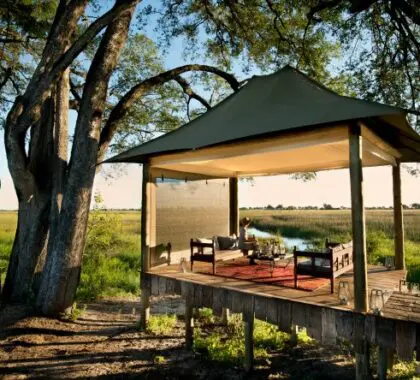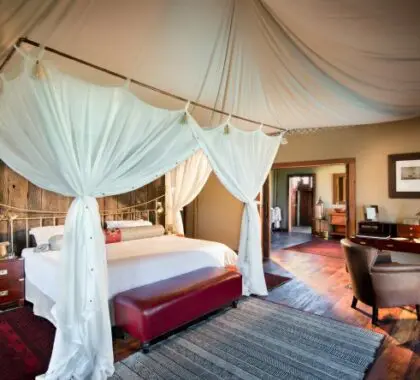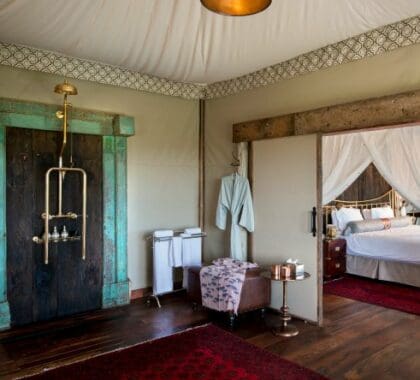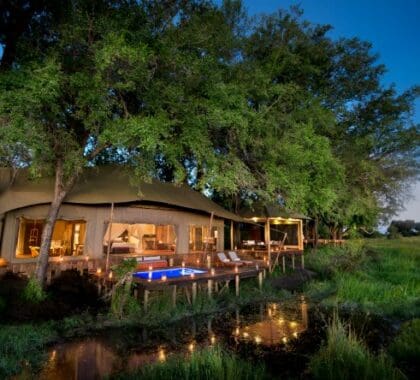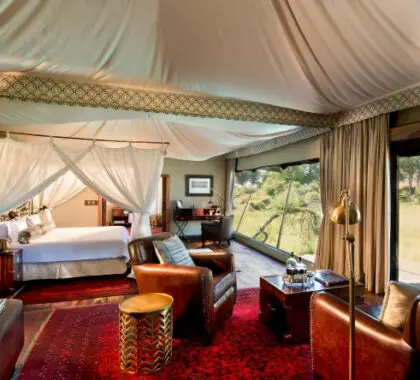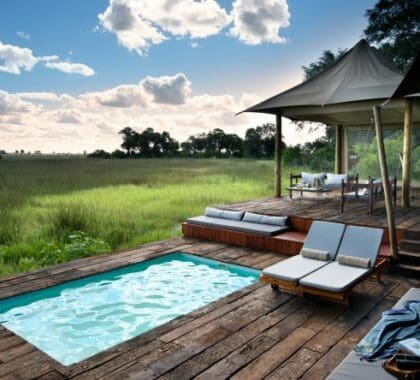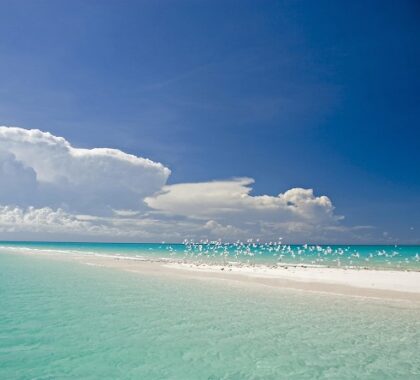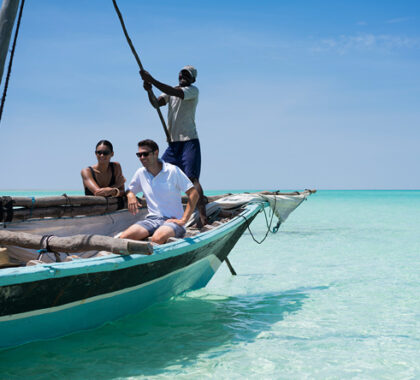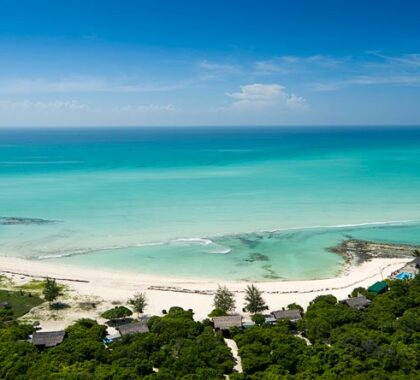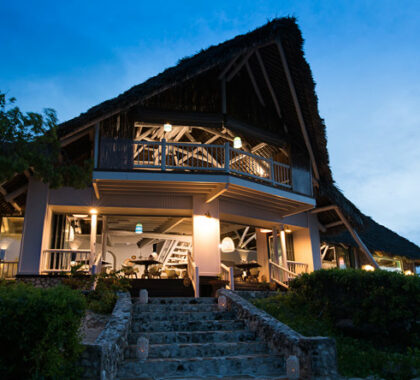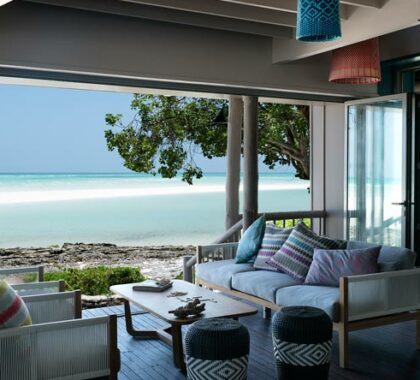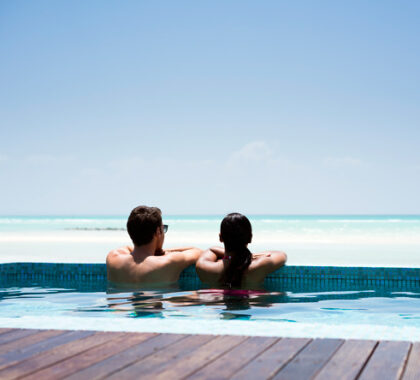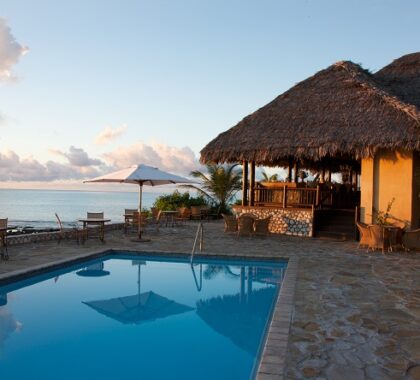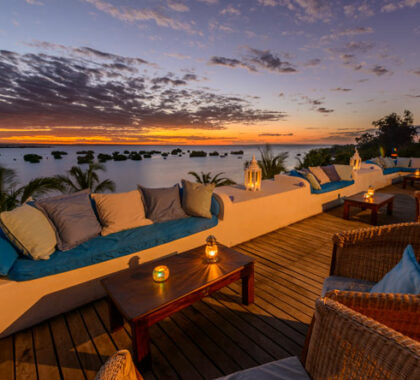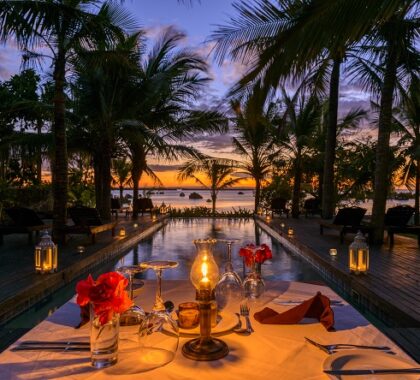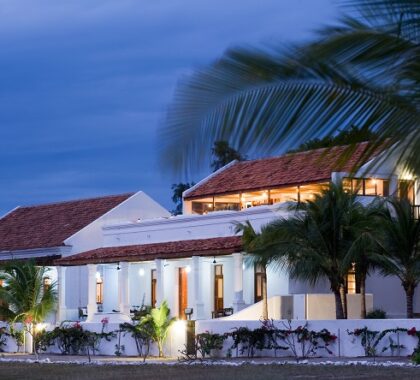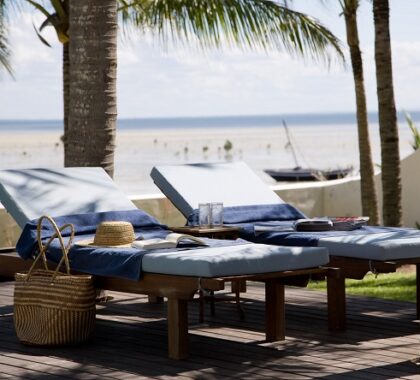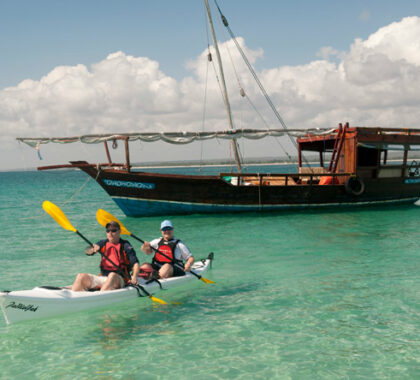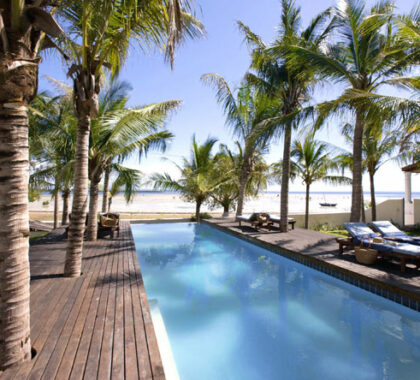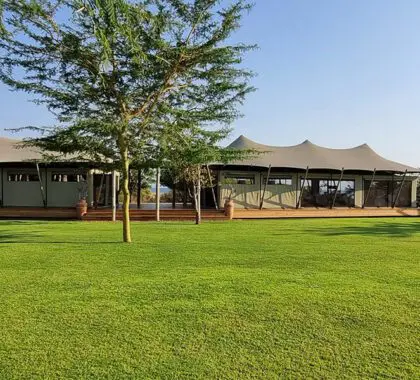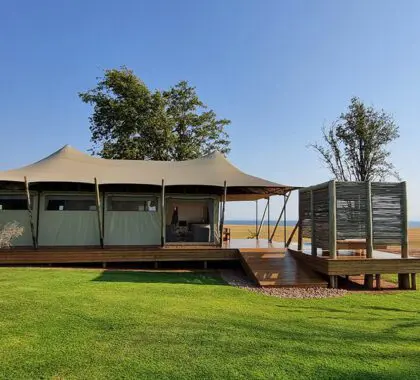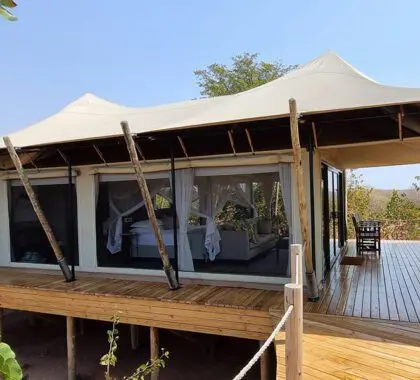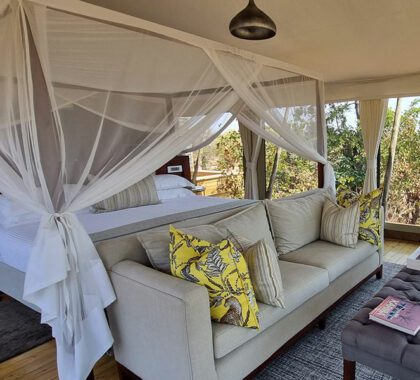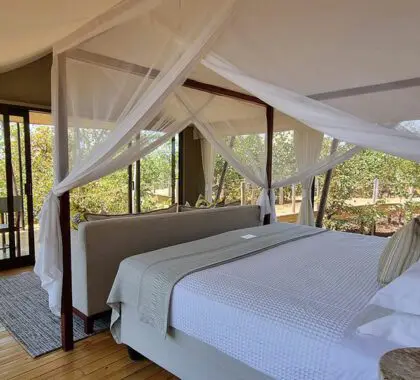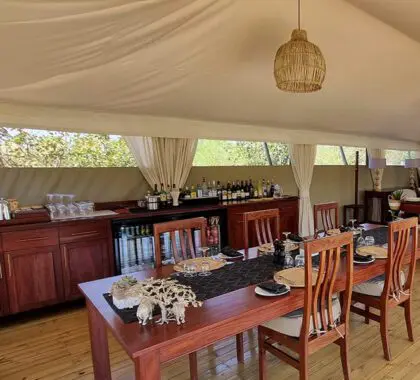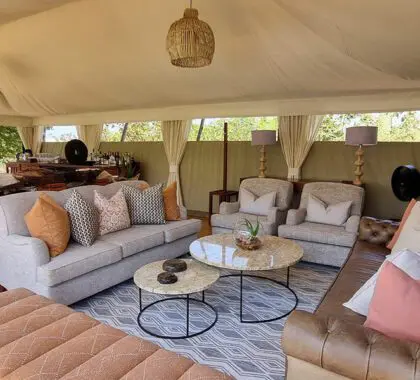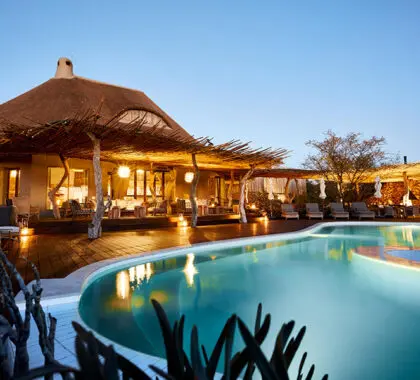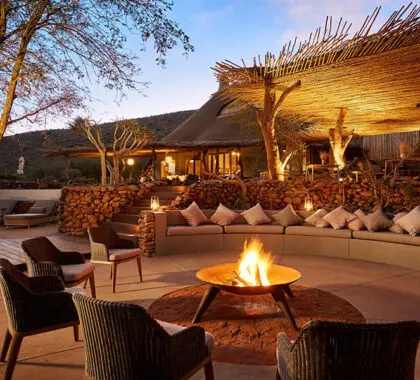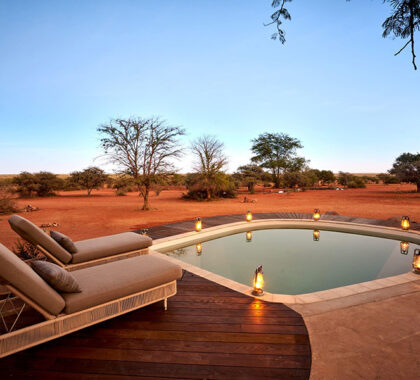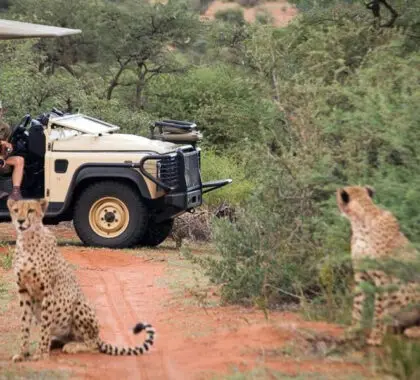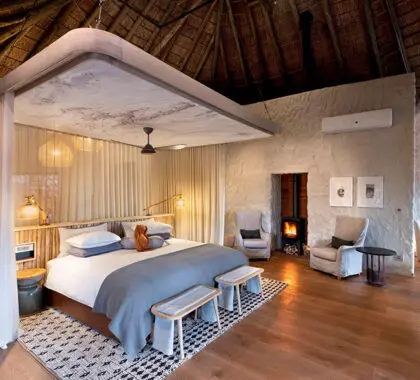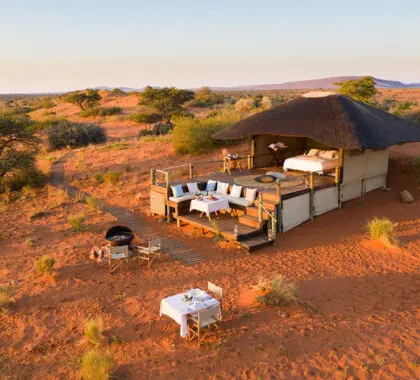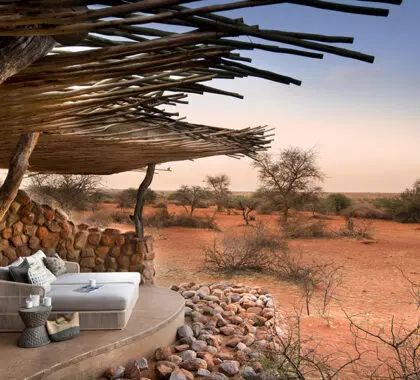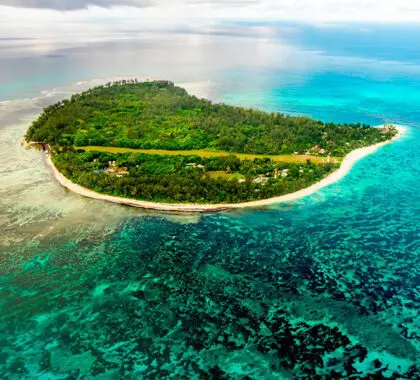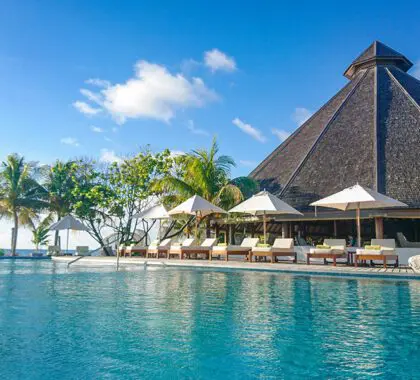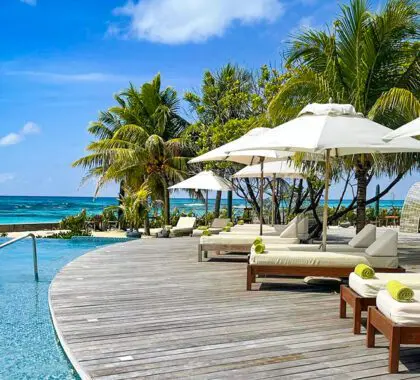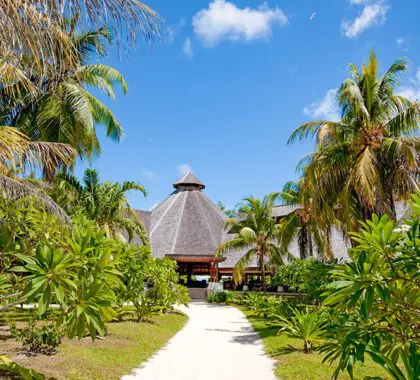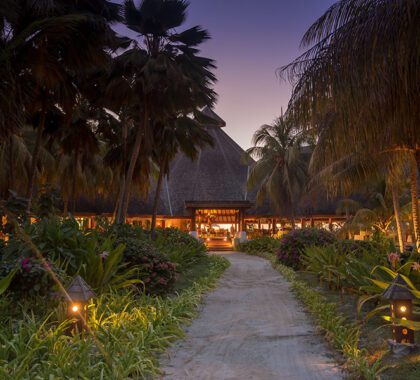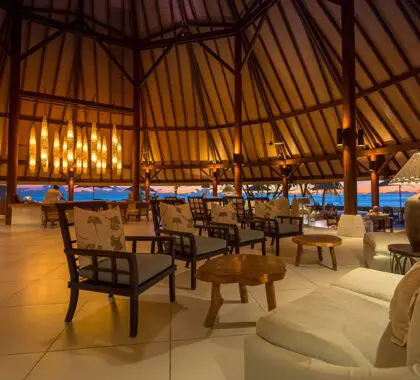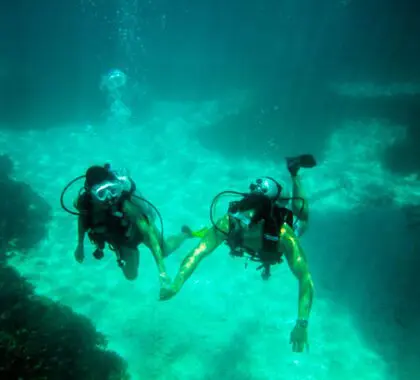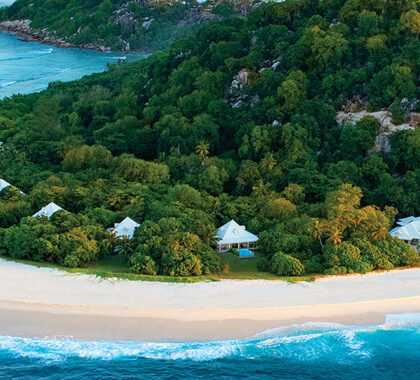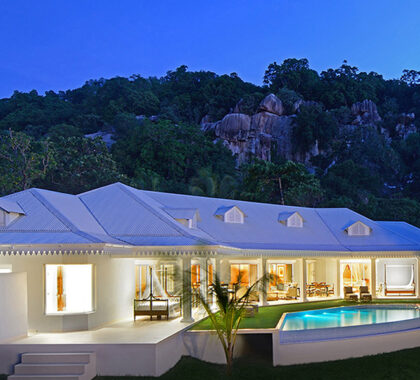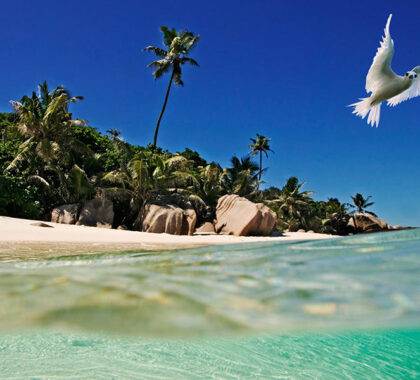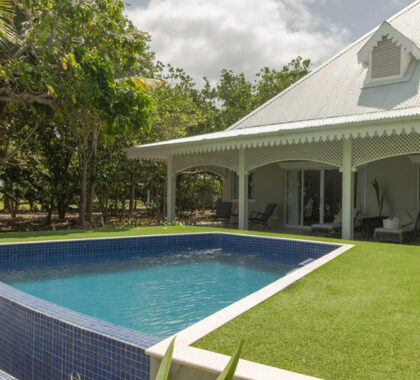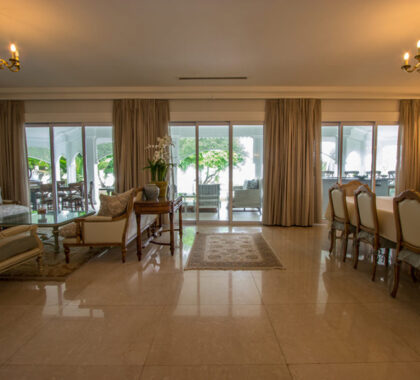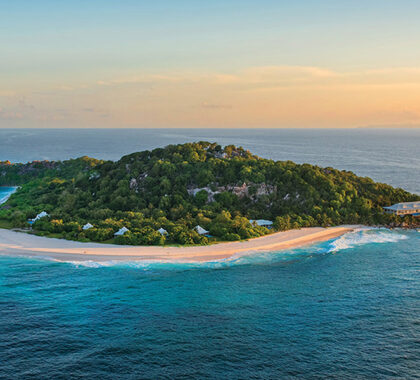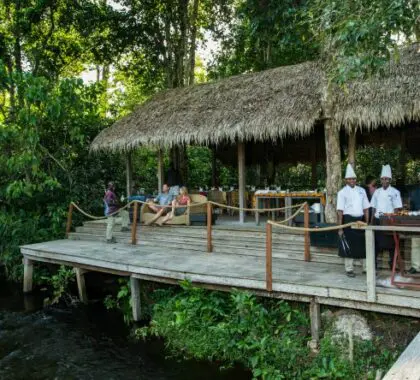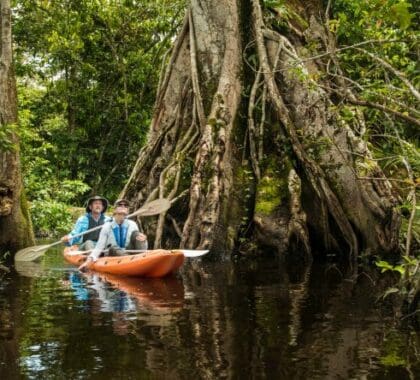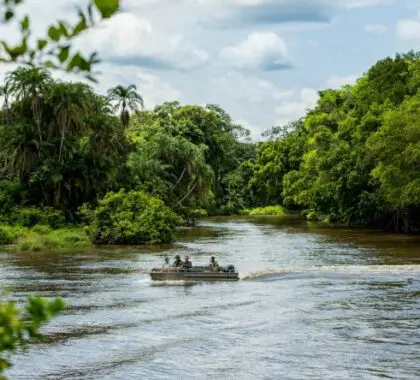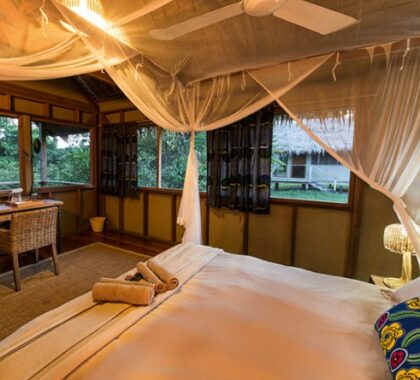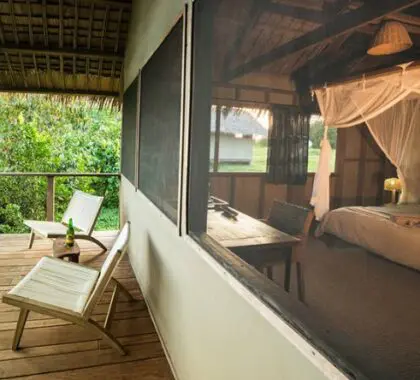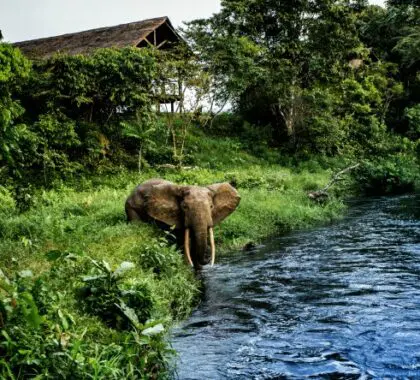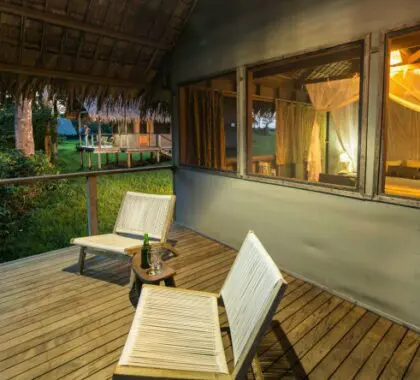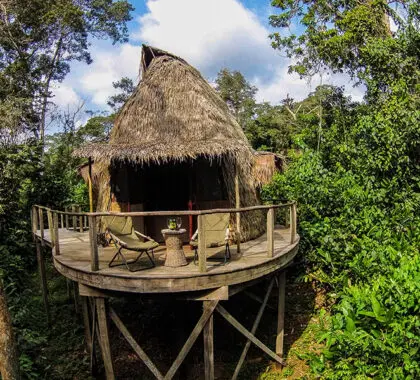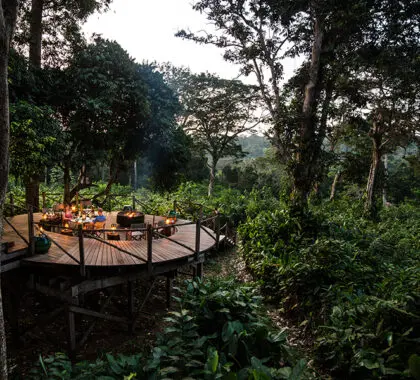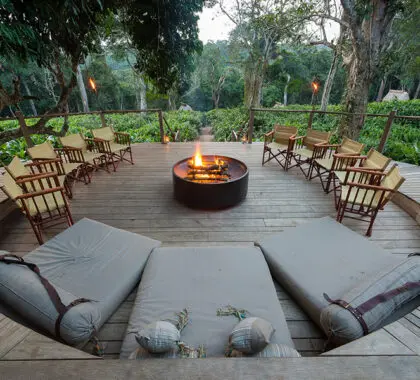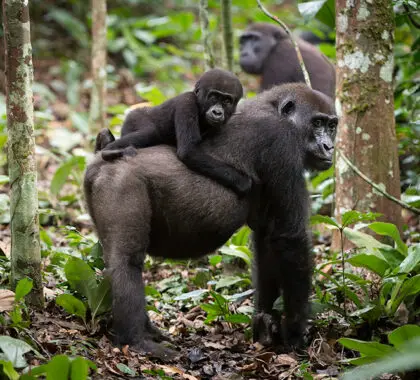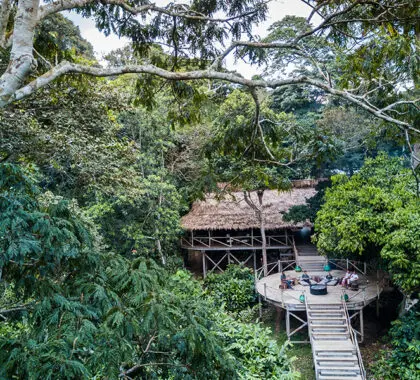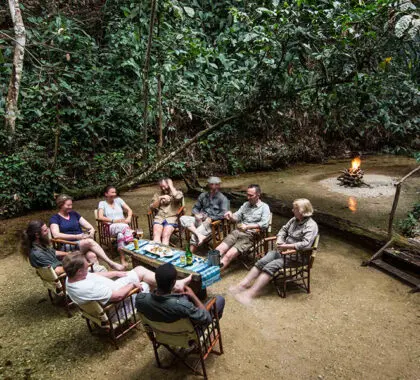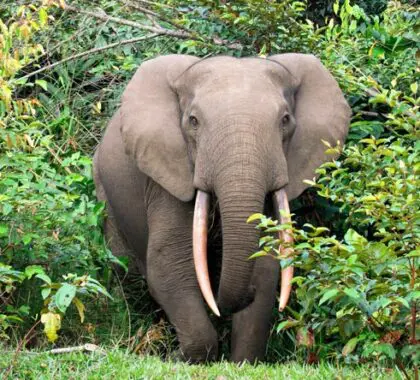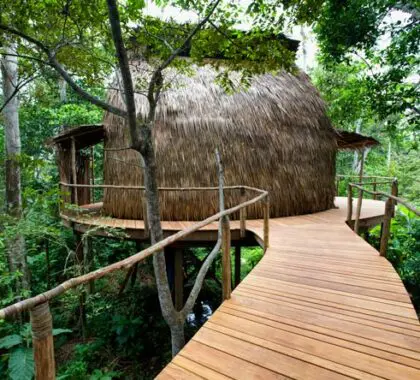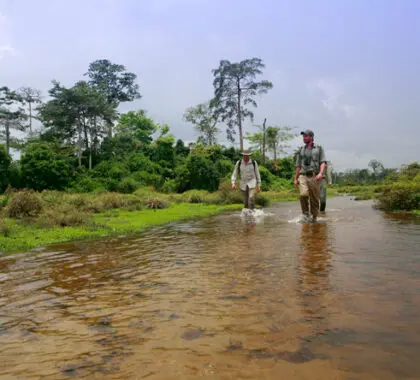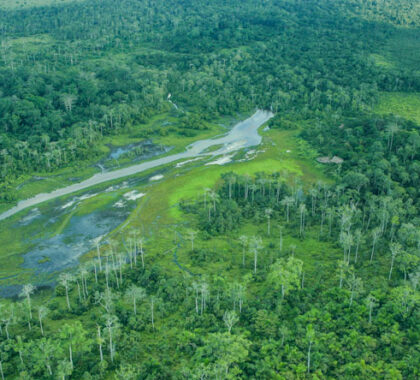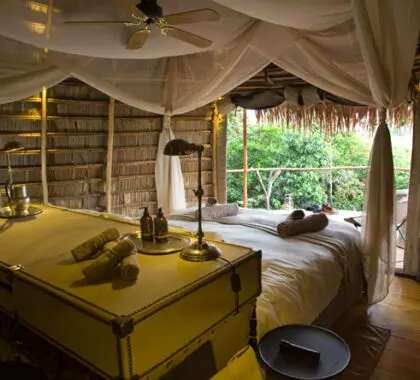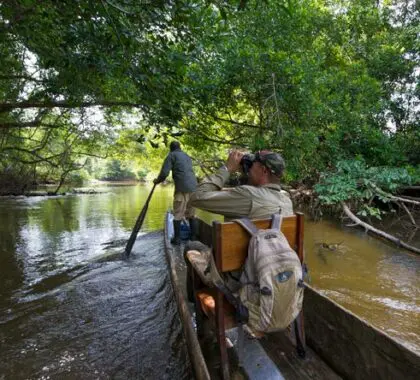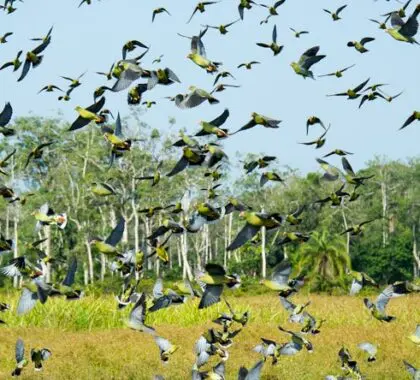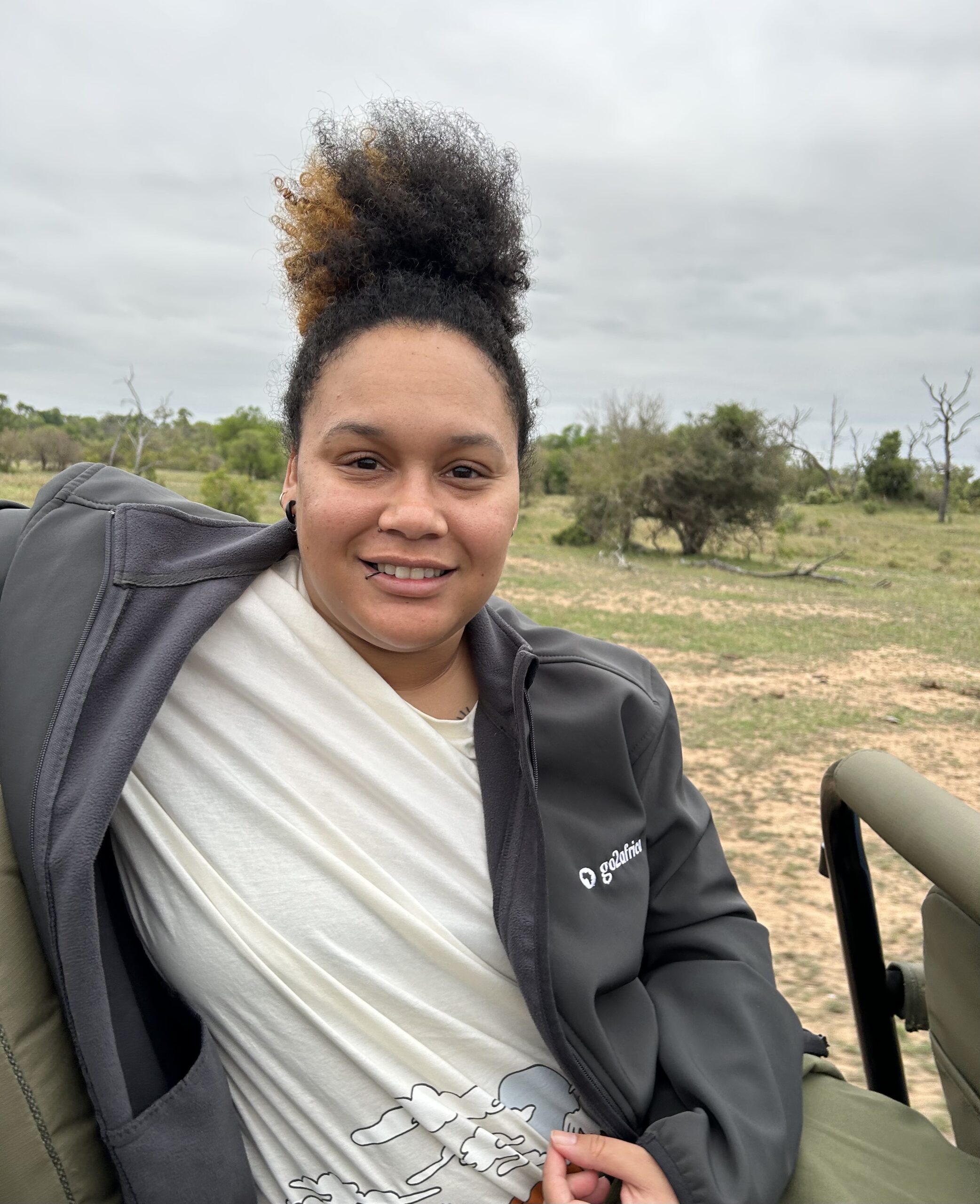Estimated reading time: 16 minutes
Africa is full of incredible unexplored destinations and secret adventures that are just waiting to be discovered. Based on our extensive travels across the continent since 1998, these are our top picks of hidden gems in East and Southern Africa.
Hidden Gems in East Africa
Tanzania
1. Rubondo Island
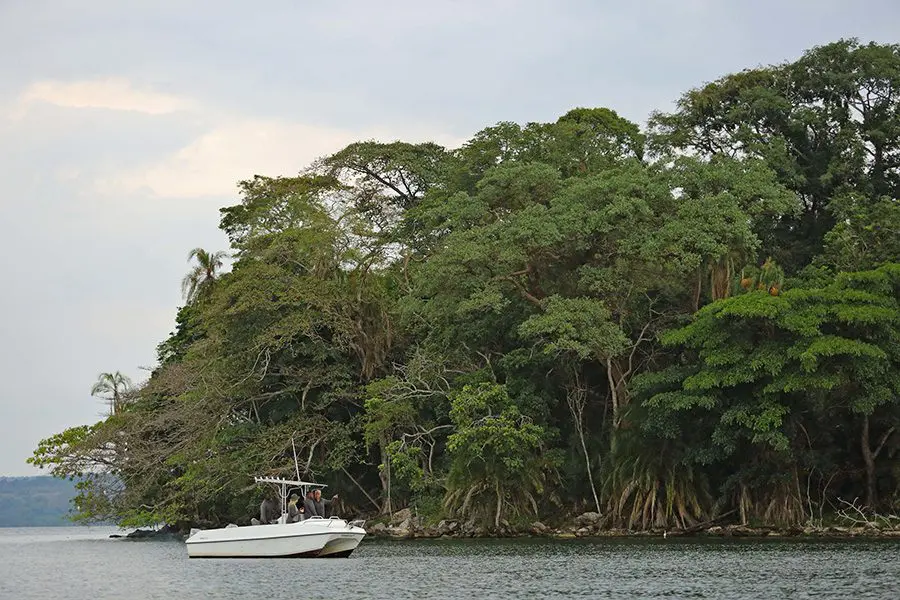
Unspoilt and remote, Rubondo Island is a floating rainforest on the southwestern corner of Lake Victoria and one of the most unique places to visit in Tanzania. Except for a handful of park wardens and staff at Rubondo Island Lodge, the island is uninhabited by humans, making it an important refuge for chimpanzees, forest elephants, giraffes and rare sitatunga antelope.
The camp is the only lodge on the island and offers activities like guided nature walks, game drives and boat cruises on the lake. While on Rubondo Island, guests can join a conservation team’s project to habituate chimpanzees to humans. This unique experience involves a guided trek to track the chimps where you can get a chance to observe them from as close as 15m for up to 30 minutes.
Where to Stay:
Rubondo Island Camp
Activities Travellers Enjoyed
2. Ruaha National Park
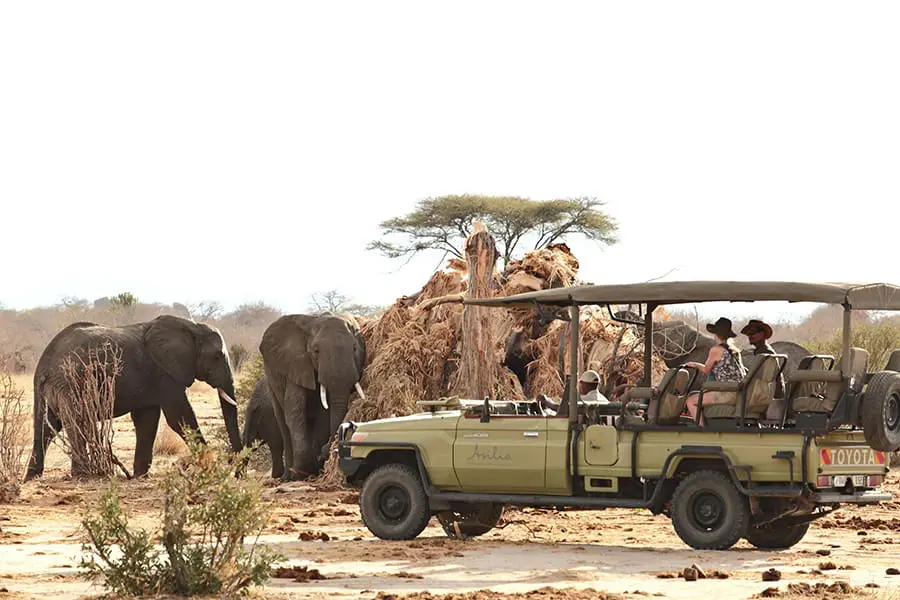

At 12,226 square kilometres (7,457 square miles), Ruaha National Park is a southern Tanzania hidden gem and one of the biggest parks in the country. Even though only 1% of Tanzania’s visitors take the time to visit this untouched national park, it offers some of the best sightings across the continent.
Ruaha is home to the largest elephant population in East Africa (around 10,000 of them) as well as a healthy concentration of big cats, holding 10% of the global lion population, as well as cheetahs and leopards in smaller numbers. Its lesser-trodden paths make for intimate and uncrowded sightings, with the dry season inviting game to drink from the Great Ruaha River, after which the park was named.
The lower number of visitors means there are fewer lodges located in Ruaha than its counterparts, making you feel as though you have the whole park to yourself. Experience the magic of Ruaha on foot during a guided walking safari, or get a one-of-a-kind bird’s eye view from a hot air balloon. However, you choose to see it, Ruaha promises not to disappoint.
Where to Stay:
3. Fanjove Private Island
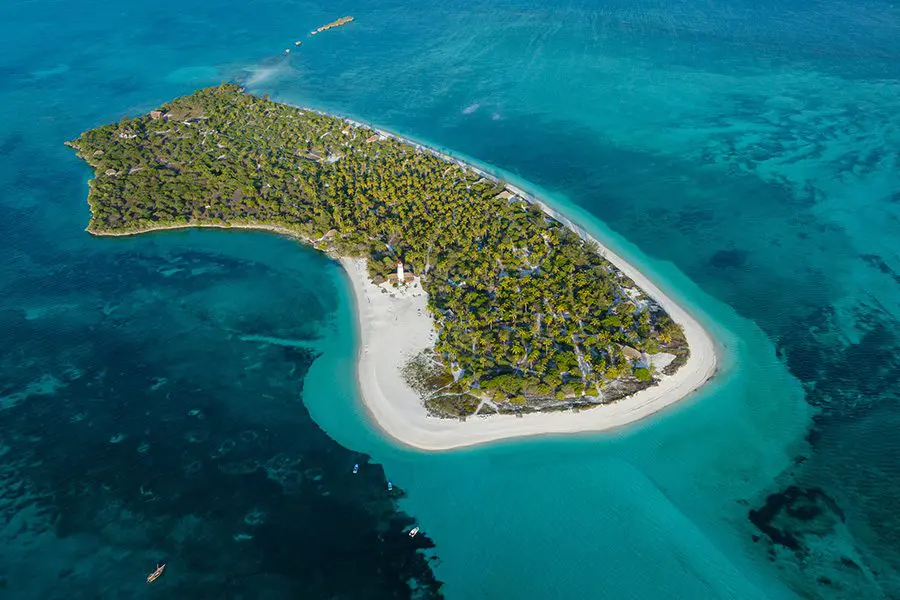

From a distance, the island of Fanjove off the coast of Tanzania almost appears as a mirage with its picturesque landscape of white sands and palm trees behind crystal waters, but oh is it real!
The petite private island promises true seclusion and exclusivity with only six individual suites, each thoughtfully placed just a minute’s stroll away from the shore, where you can excitedly watch humpback whales and bottle-nosed and spinner dolphins gracefully swimming by.
To put its size into perspective, as the smallest of the Songo Songo Archipelago islands, you can circle the entire island on foot in under an hour, making it perfect for an undemanding barefoot afternoon walk.
Where to Stay:
4. Mwiba Private Concession
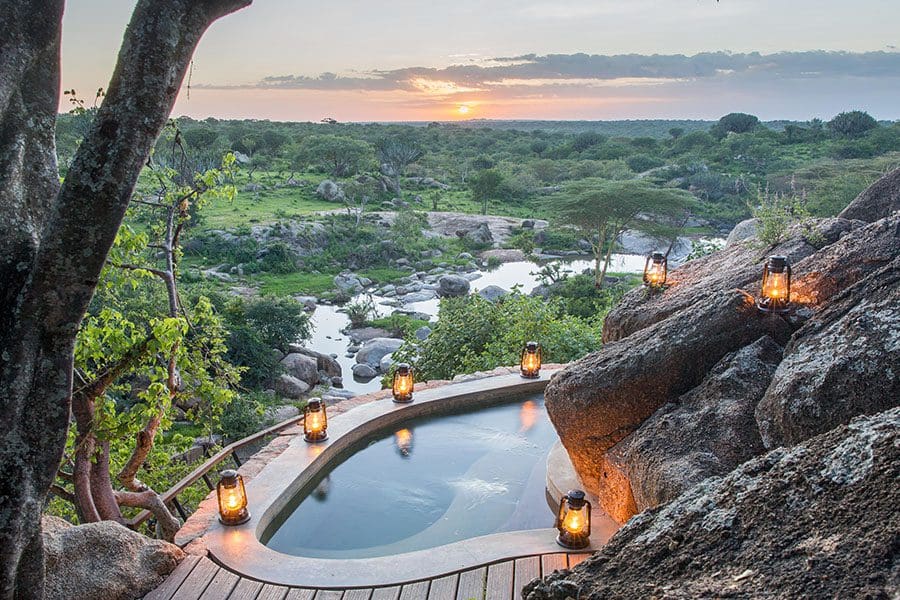

Romanticised depictions of a safari come to life at Mwiba Private Concession. Even with its prime location in the southern Serengeti, Mwiba only ever hosts a handful of travellers at a time –one of the many perks of retreating to the unexplored parts of Africa.
Upbeat days call for taking your designated private safari vehicle out to the bush, with your personal guide, as and when you please; cultural walks with the local Hadzebe tribe, helicopter excursions for aerial views of the vast Serengeti plains, and thrilling night safaris.
Slow days invite you to truly indulge in staying at one of the most luxurious lodges in the greater southern Serengeti – watching from the infinity pool as elephants drink from the Arugusinyai River not far off. As you get ready to end the day, retire to your king-sized bed in one of the luxury tented suites, or spend the night out under the stars fly-camping.
Where to Stay:
Kenya
5. Lewa Wildlife Conservancy
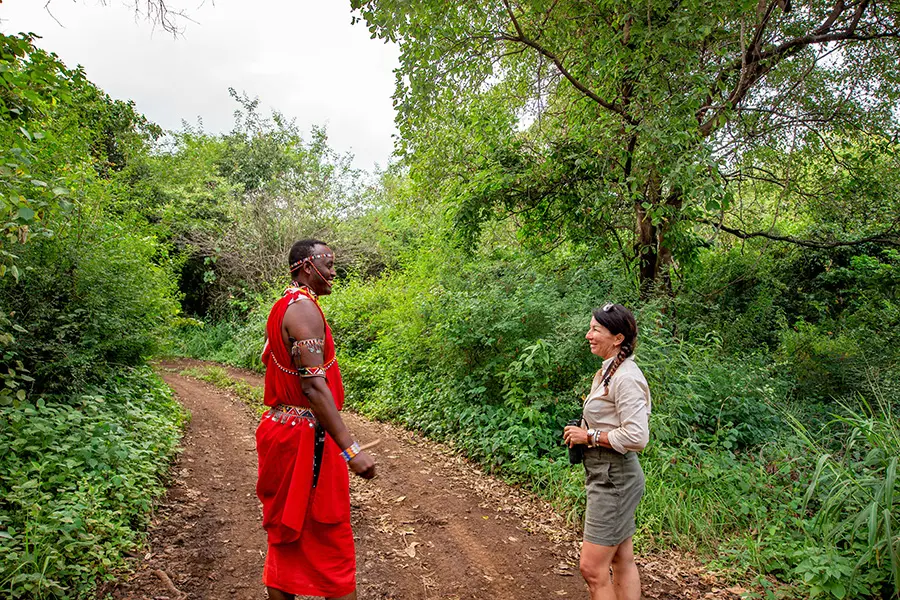

Forming part of the Mount Kenya World Heritage Site, Lewa Wildlife Conservancy is a frontrunner in community-based conservation in northern Kenya. Testimony to this, local communities act as a first line of defence against poaching, supplying crucial information to park rangers before any potential poachers set foot in the reserve.
The snow-capped peak of Mount Kenya is visible in the north, and the Big 5 conservancy has a diverse range of habitats including forest, acacia woodland, extensive natural springs and fertile grasslands (Plus, Prince William has often been spotted in Lewa, very occasionally with wife Kate Middleton).
Where to Stay:
Kitich Forest Camp
Activities Travellers Enjoyed
Porini Amboseli Camp
Activities Travellers Enjoyed
Cottar's 1920s Camp
Activities Travellers Enjoyed
Uganda
6. Mgahinga National Park
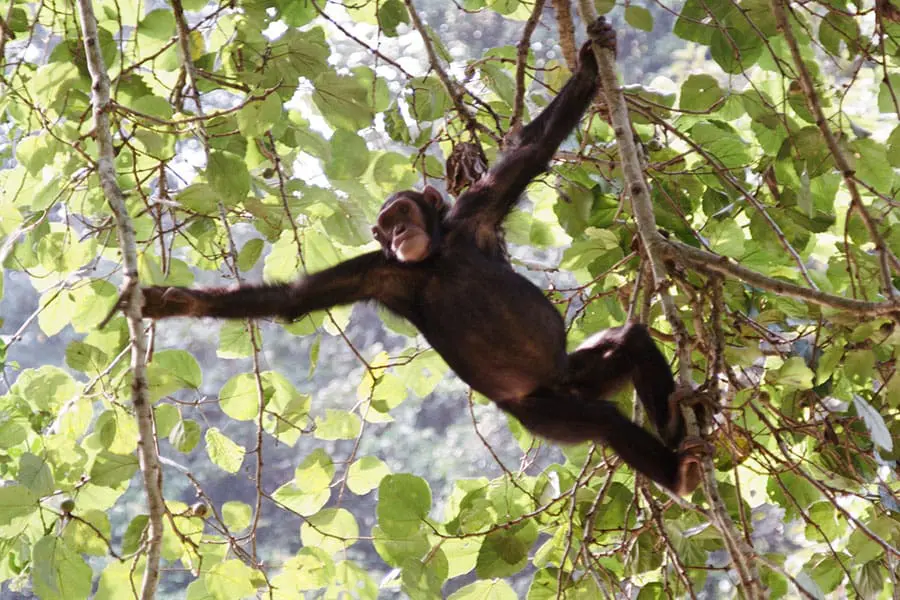

Located in the southwestern part of Uganda in the Kisoro district, Mgahinga National Park is the smallest national park in all of Uganda, sized at 33.9 km2 (13.1 sq mi). It’s also home to two rare and endangered species as well as several other mammal species.
The park was initially formed to protect the rare mountain gorillas that inhabit it. Its dense forests are home to several unhabituated gorillas and just one habituated family, the Nyakagezi family, which only has about ten members with numbers rising and falling over the years.
A stay at the Gahinga Lodge provides you with the perfect gorilla trekking base camp for the gorillas of Mgahinga as well as the once-in-a-lifetime opportunity to catch a glimpse of the rare golden monkey – although this sighting cannot be promised. With no more than eight people trekking the park daily, it’s an intimate experience in one of the most unique places to visit in East Africa, Uganda.
Where to Stay:
Kyambura Gorge Lodge
Activities Travellers Enjoyed
Hidden Gems in Southern Africa
Zambia & Malawi
7. Kafue and South Luangwa
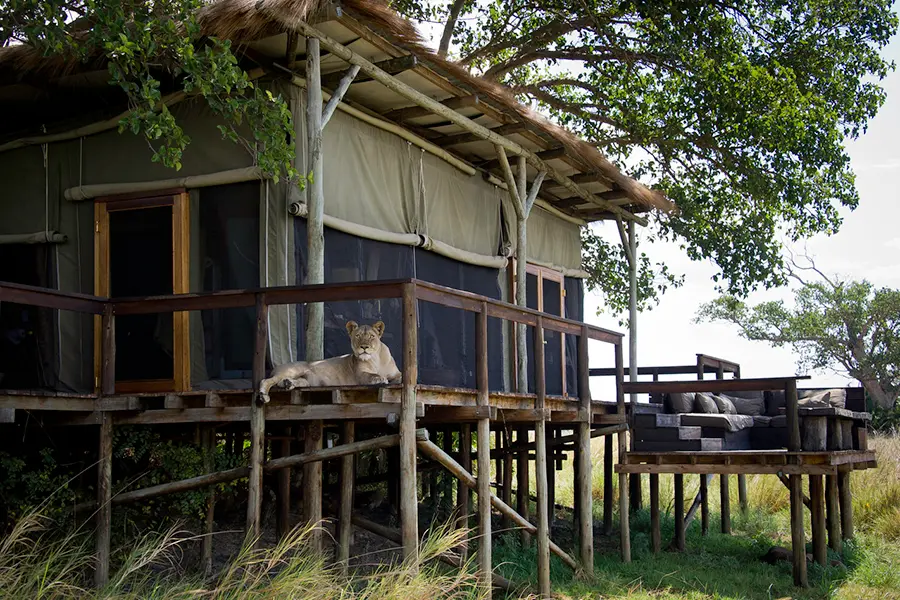

The Kafue River forms the western border of Kafue National Park, a huge area in central Zambia. Here, the plains game far outnumber visitors and where there are plains game, predators are sure to follow. Head to Kafue to discover untouched Africa with only a handful of lodges to cater for guests.
Shumba Camp
Home of the original walking safari, South Luangwa is an untapped premier wildlife destination and another of the few national parks in Africa where you are permitted to explore on foot. It is known for having the continent’s best safari guides, many of whom grew up in the area, so you are guaranteed to learn a lot and have a highly personalised experience.
When it comes to walking expeditions, this is big game viewing at its most adventurous and you may have to forgo some modern luxuries like Wi-Fi or air conditioning. That said, tented camps are fully furnished and equipped, and you will be rewarded with possibly the most authentic safari experience in Africa.
Where to Stay:
Chindeni
Activities Travellers Enjoyed
Chisa Busanga Camp
Activities Travellers Enjoyed
8. Lake Malawi
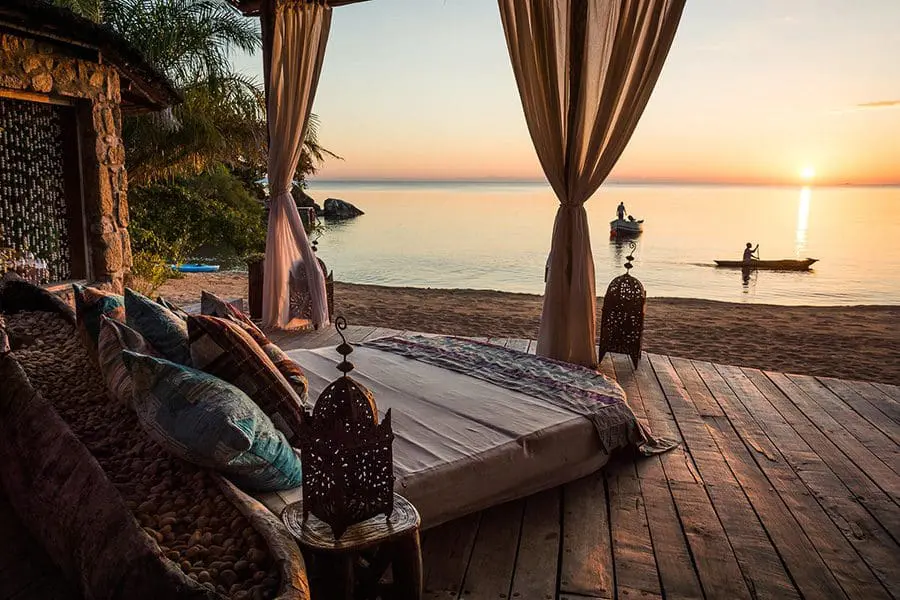

One of the most unique places to visit in East Africa, Lake Malawi combines the very best of a vacation in the tropics with the very best of Africa unexplored. Think sunny skies, warm sands, and pristine waters with no crowds or queues. Scuba dive amongst the largest amount of freshwater fish species of any other lake in the world, or stay above and explore the waters by traditional canoe with a local guide.
On dry land, you can spend your days simply kicking back – relaxation is synonymous with Lake Malawi’s ’beach life’. Explorers can venture to the island by mountain bike, go bird watching or visit Liowonde National Park for a local big game safari.
For couples, the intimate setting of Kaya Mawa Lodge entices you to indulge in romance and luxury. Known as Lake Nyasa in Tanzania and Lago Niassa in Mozambique, Lake Malawi sits between the three countries (Malawi being the third) as the third largest freshwater lake in Africa. This hidden gem is both a place of wonder and the ultimate African beach holiday away from any kind of bustle.
Where to Stay:
Namibia
Damaraland, Kaokoveld & Skeleton Coast
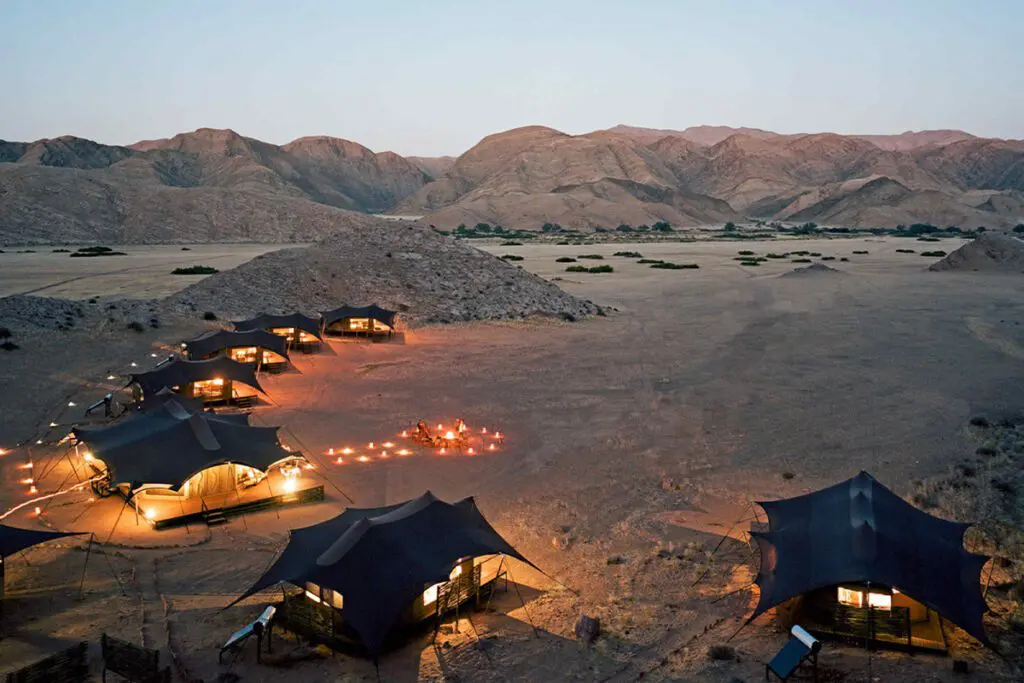

Damaraland in Namibia is best known for its incredible rock art, some of which dates back 10,000 years. You will be equally mesmerised, if not astonished, at the region’s soaring mountains, bottomless gorges and ancient calderas as far as the eye can see.
As featured in the BBC series Earth II, the desert lions can be found in the northern Palmwag region of Damaraland. Elephants here are physiologically and behaviourally adapted to life in the desert – they have longer legs to travel greater distances, a lighter mass, and are extremely sensitive when feeding on the scarce vegetation (as opposed to their savannah cousins that are very destructive when feeding, thinking nothing of knocking over a tree or gouging baobab bark).
Although the Kaokoveld and Skeleton Coast couldn’t be more different, they are equally evocative. You can fly for miles over both without seeing much in the way of so-called ‘civilization’. Roads and buildings are rare. The Kunene River feeds the Kaokoveld, which is all the way up north above Etosha National Park, while the cold air from the Atlantic hits the hot air of the desert, causing beguiling fogs to settle over the Skeleton Coast. The ghosts of sailors past can be detected along this strip of coastline, which is home to seals, whales, dolphins and thousands of pelagic birds.
Where to Stay:
Damaraland Camp
Activities Travellers Enjoyed
Desert Rhino Camp
Activities Travellers Enjoyed
Botswana
10. Kalahari Desert & Okavango Delta
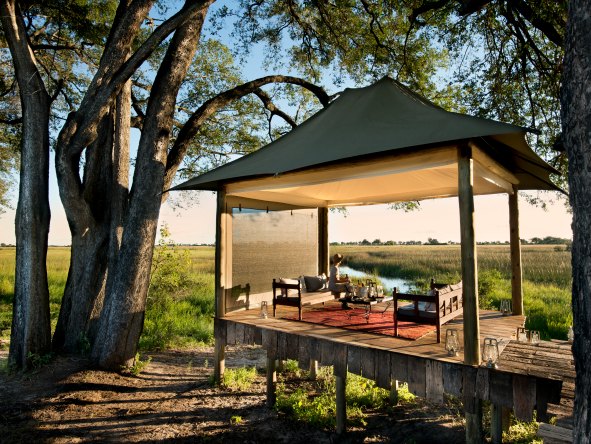

The Kalahari Desert is as fascinating as it is vast – extending into South Africa, Botswana and connecting with the Namib Desert in Namibia. It is a semi-arid landscape where you will find iconic red sands, and so much more in Botswana’s Central Kalahari: black-maned Kalahari lions, rare pangolin and big game like oryx, habituated meerkats, dazzling night skies experienced on desert sleepouts, an annual zebra migration, horse-riding safaris, San rock art and fantastic off-the-grid accommodation.
The Okavango Delta is one of the most popular places to visit in Botswana but there are still places deep in its centre that are accessible to a select few. Water levels tend to be deepest here and some lodges can only be accessed by boat. Traditional 4×4 game drives are replaced by mokoro or canoe safaris, giving you a completely new outlook on the wildlife.
Where to Stay:
Jack's Camp
Activities Travellers Enjoyed
Mozambique
11. Quirimbas Archipelago
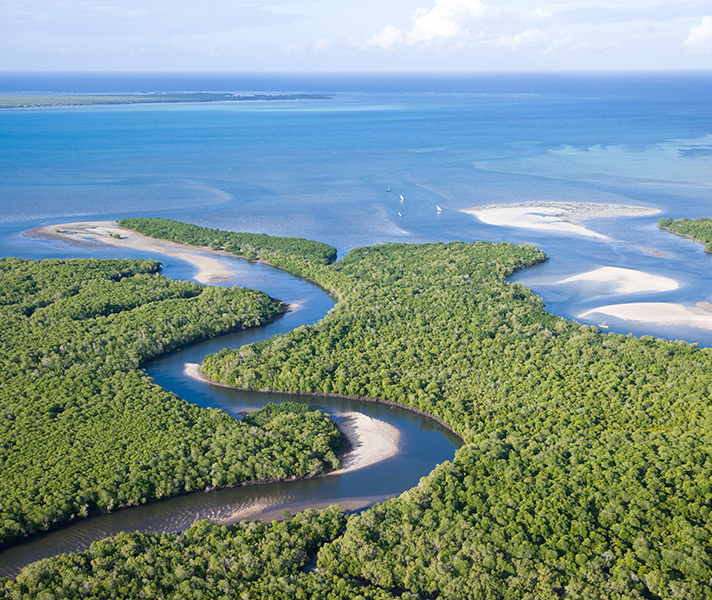

This little-explored archipelago off the coast of Mozambique consists of 27 coral islands, many of which are uninhabited. Accommodation in the Quirimbas is limited to a handful of lodges so you won’t be hard-pressed to find your own private slice of Indian Ocean beach bliss. Some ultra-luxe accommodation is even located on its own private island. On Ibo Island, you can enjoy the rich culture of Mozambique, as well as exquisite natural wonders including one of Africa’s largest mangrove forests.
Where to Stay:
Anantara Medjumbe Island Resort & Spa
Activities Travellers Enjoyed
Ibo Island Lodge
Activities Travellers Enjoyed
Zimbabwe
12. Matusadona National Park
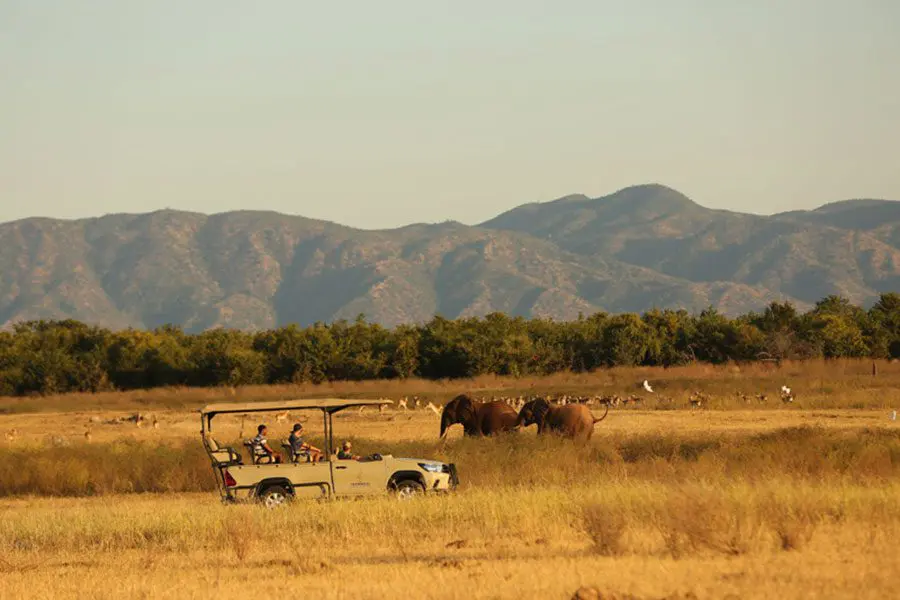

Grassy floodplains and mopane woods welcome you to Matusadona National Park, a wilderness gem on the southern shore of Lake Kariba. Often described as rugged’’, it is this quality that adds to the park’s allure, inviting you out on walking safaris with expert guides and rangers.
As home to all but one of the magnificent big five (with rhinos being the missing member) and the second largest lion concentration in Africa (preceded only by Tanzania’s Ngorongoro Crater) the opportunities for sightings are many. Large elephant and buffalo herds can be seen throughout, while rarer species such as the Africa Wild Dog are also present.
A visit to Matusadona is not complete without a boat ride on the waters of Lake Kariba, where crocodiles and hippos rest, coming to the surface to bathe in the sun. The dry season calls diverse animals to gather at the beautiful lakeshore in large numbers, making this the ideal time to visit.
Where to Stay:
South Africa
13. Tswalu Kalahari Reserve
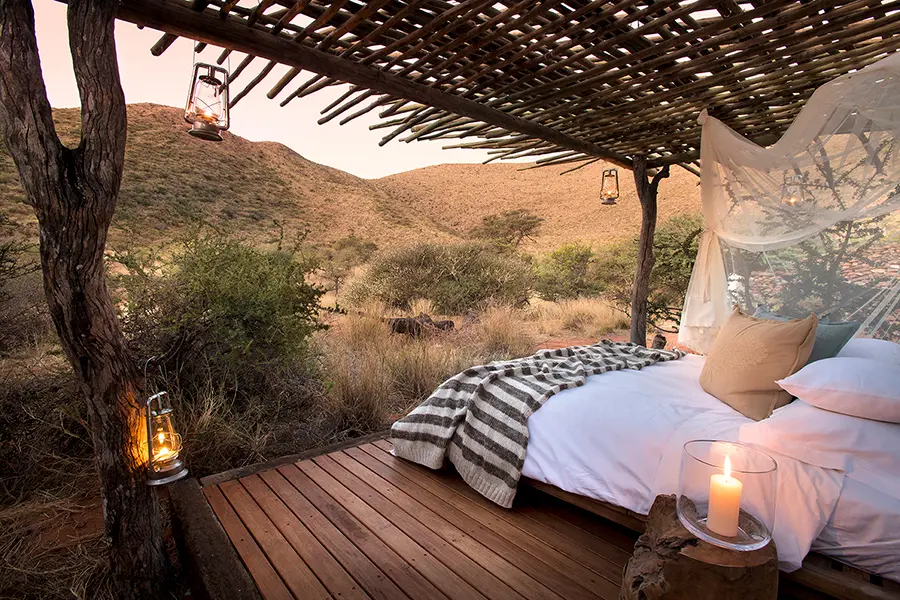

At 114,000 hectares (282,000 acres), Tswalu is the biggest private reserve in South Africa and your private playground during your stay. The expansive desert land invites you to explore the magic of the Kalahari and its diverse habitats and animals.
As part of the private reserve experience, bookings come with your own private safari vehicle, a guide and a tracker to direct you to the best sighting spots. You can expect to see African wild dogs, black-maned lions, cheetahs, and desert black rhinos on your game drives. For a more grounded experience, nature walks and guided horse safaris will lead you through game trails, grasslands, and over dunes where a glass of bubbles and a picnic await.
The low-impact, high-value tourism model is one of the reasons Tswalu has the lowest guest footprint of any other reserve in South Africa (making it one of the hidden gems in South Africa), and why you’ll have the entire area practically to yourself to explore as and when you please. At the end of the day, retire to luxurious 5-star lodges and star beds where your only neighbours are the people you came with.
Where to stay:
The Motse at Tswalu
Activities Travellers Enjoyed
Hidden Gems in the Indian Ocean Islands
Seychelles
14. La Digue Island
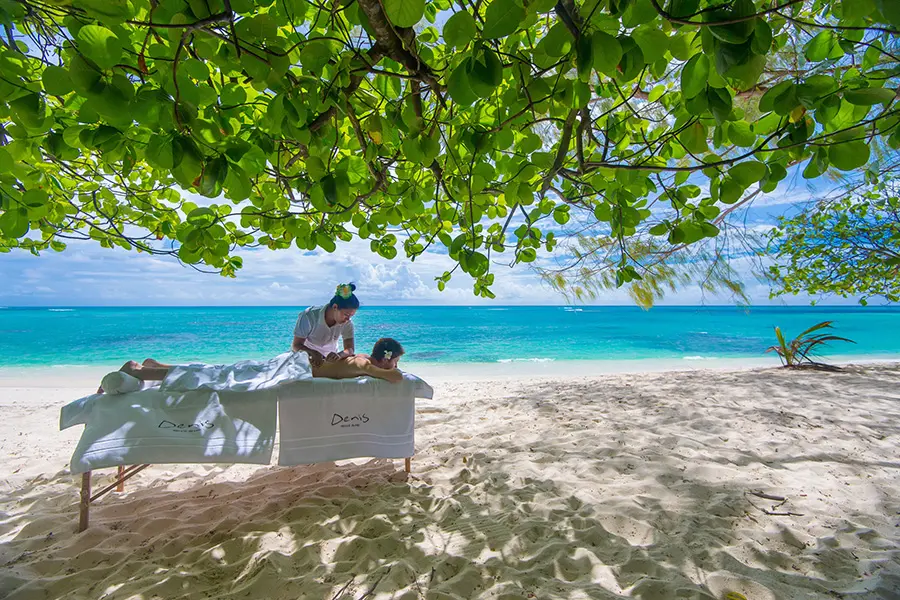

The Indian Ocean islands are full of secret vacation spots! Expect a laid-back and unhurried way of life – you won’t see many cars, malls or highways on La Digue! Hop onto an ‘ox taxi’ or a bicycle and explore this immaculate island, said to be one of the most unspoiled in the Seychelles. Discover gorgeous, private coves and enjoy the sublime turquoise waters of the warm Indian Ocean. Experience the caster-sugar sand and massive granite boulders of Anse Source d’Argent – renowned for being the most photographed beach in the world.
Where to Stay:
Denis Private Island Lodge
Activities Travellers Enjoyed
Cousine Island
Activities Travellers Enjoyed
Hidden Gems in Central Africa
Congo
15. Congo
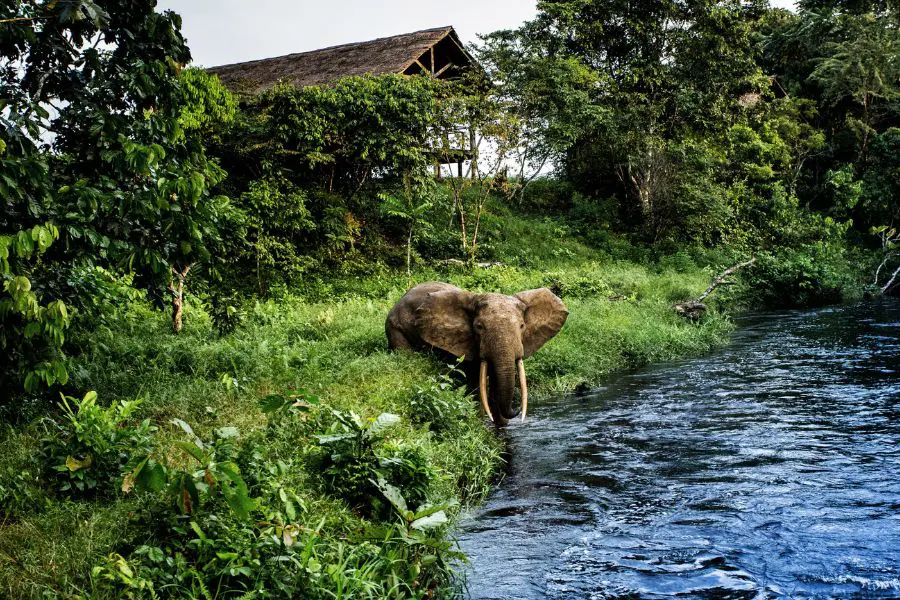

Not in Southern or East Africa, but still worth a special mention, the Congo is the newest and most exciting destination in Africa. The country has opened access to Africa’s equatorial rainforests, giving intrepid adventurers the opportunity to experience this pristine and unexplored environment.
Known as the second lung of the world, this emerald paradise is home to more than a hundred species of mammals like western lowland gorillas, forest elephants and buffalos, hyenas, rare bongo antelopes and much more.
Accommodation in tranquil forest settings on the edge of Odzala National Park offers breathtaking 360-degree views of the surrounding rainforest. The marshy ‘bais’ draws forest buffalo and other rare animals to drink, such as elephants, bushbuck and putty-nose monkeys.
Where to Stay:
Ngaga Camp
Activities Travellers Enjoyed
Ready to Plan Your Escape to Secret Africa?
Get in touch with our African Safari Experts to start planning. With over two decades of experience and knowledge, we are professionals in crafting tailor-made itineraries that are sure to be the trip of your dreams.

